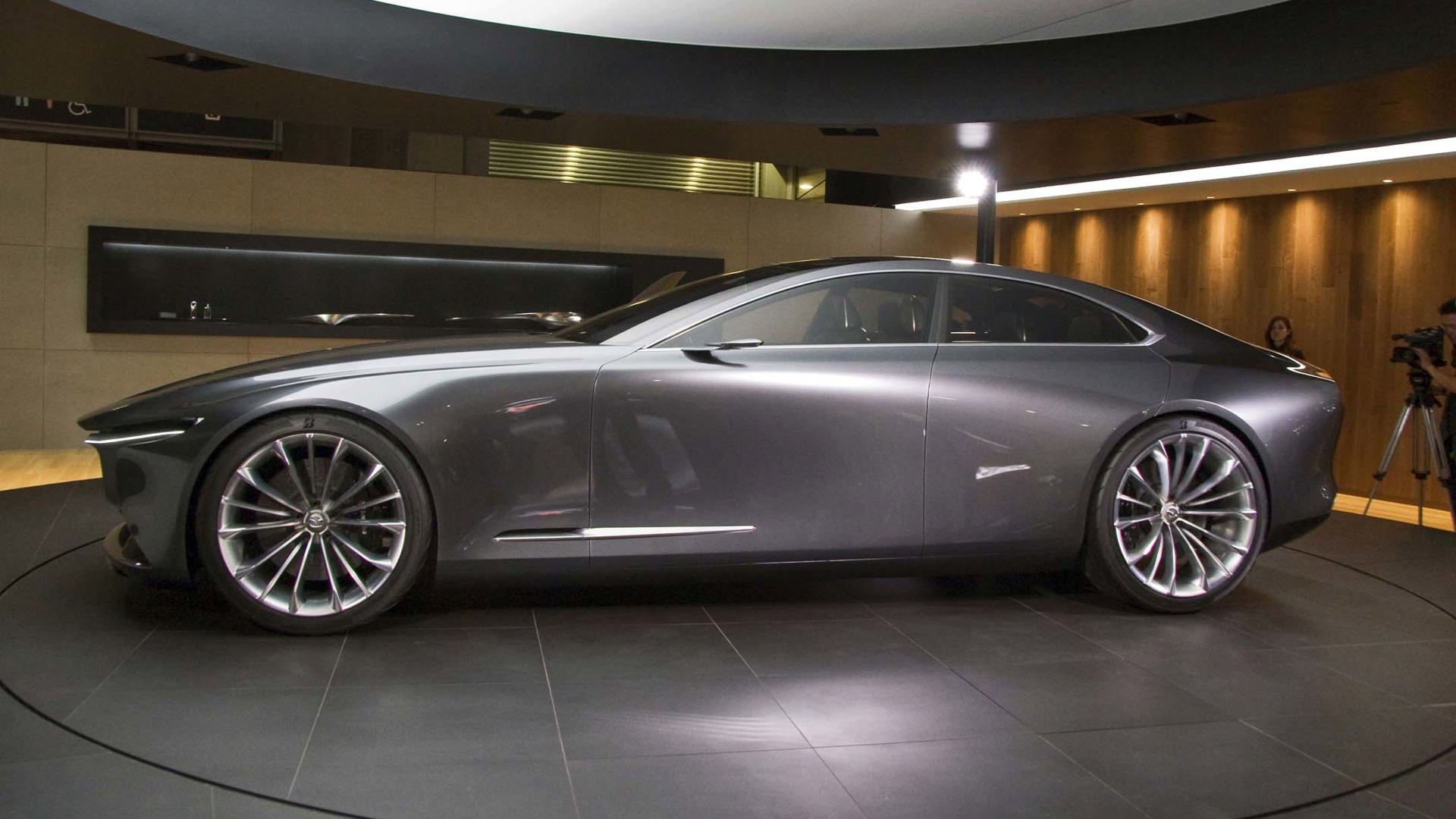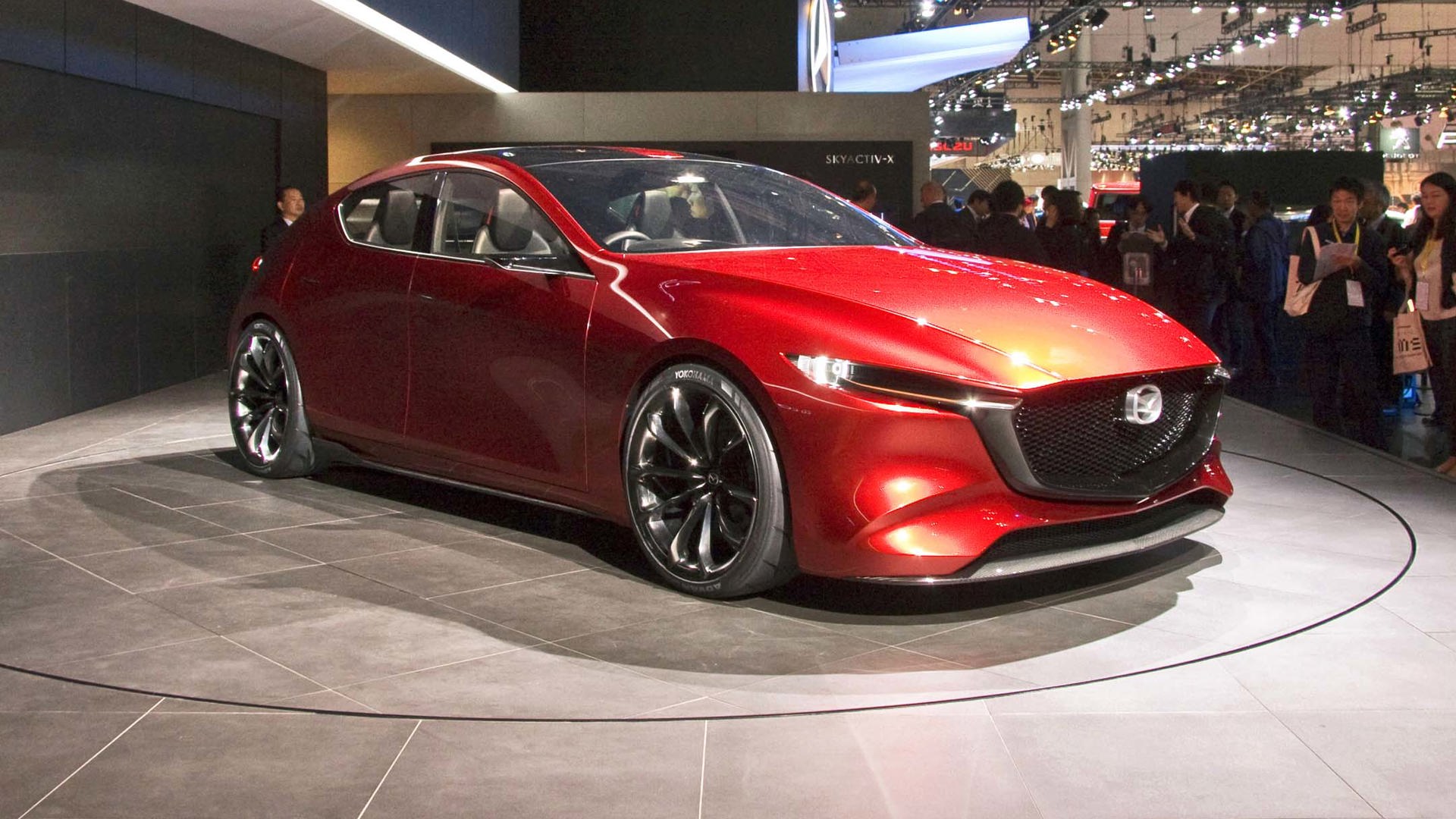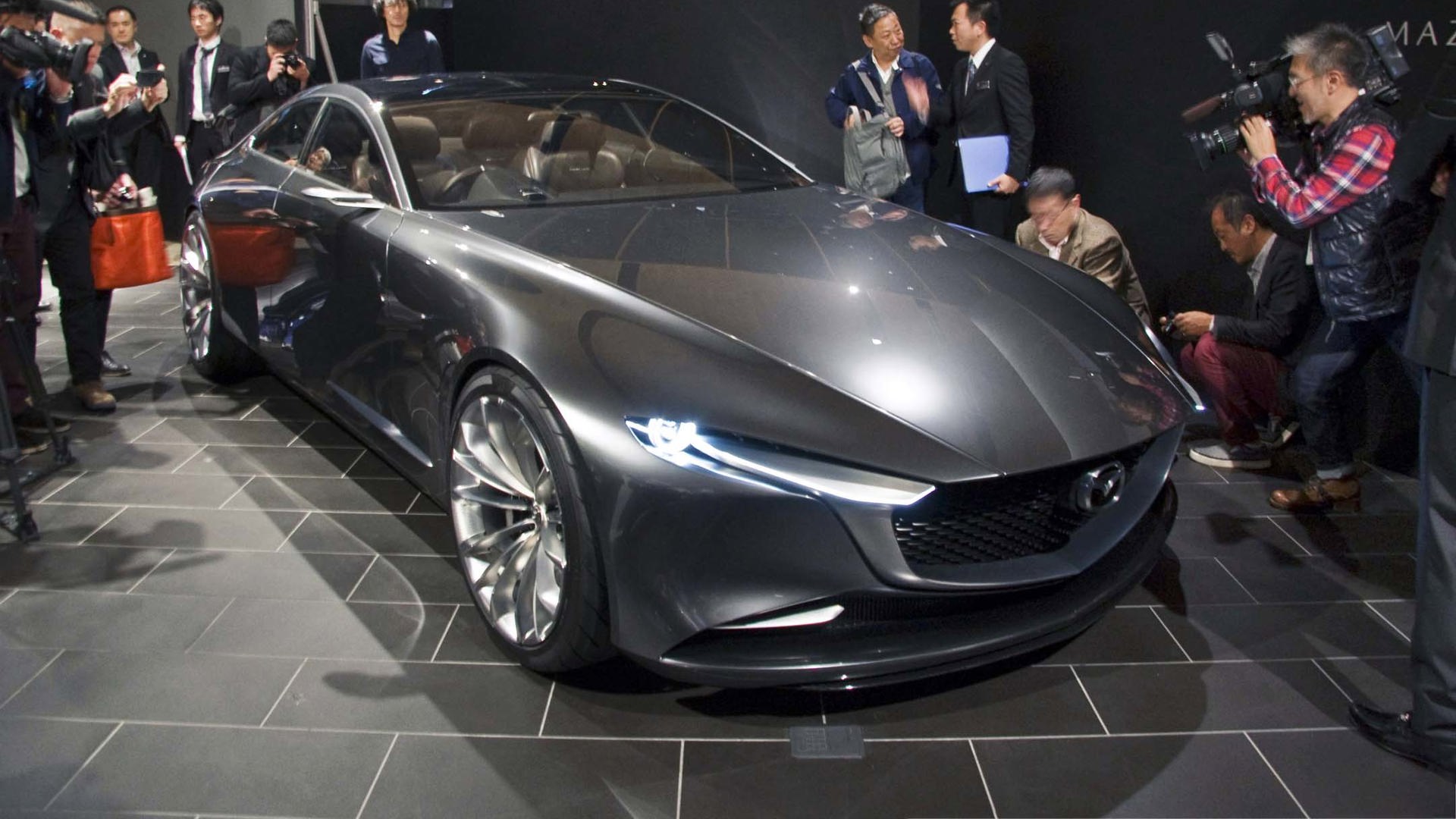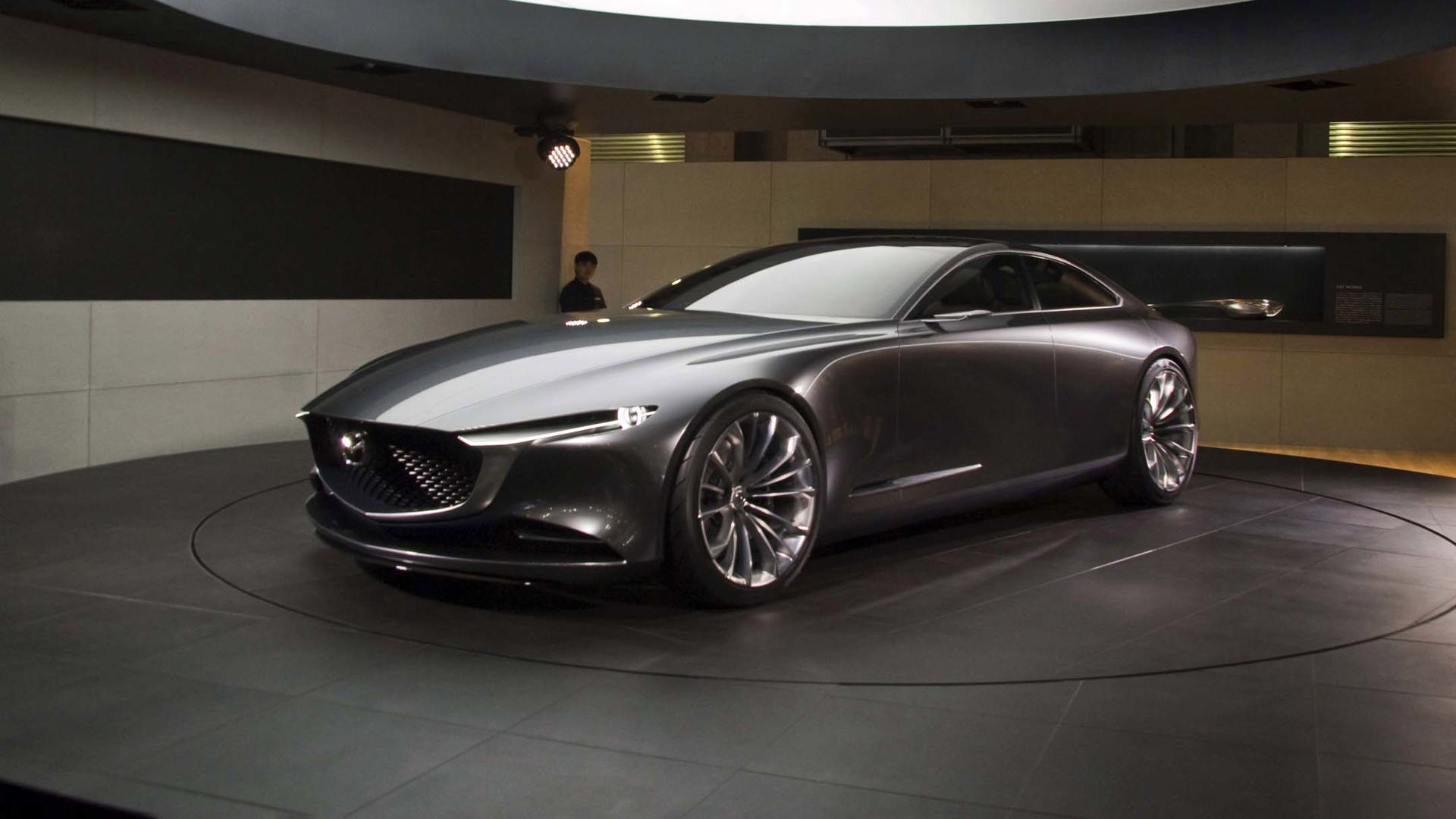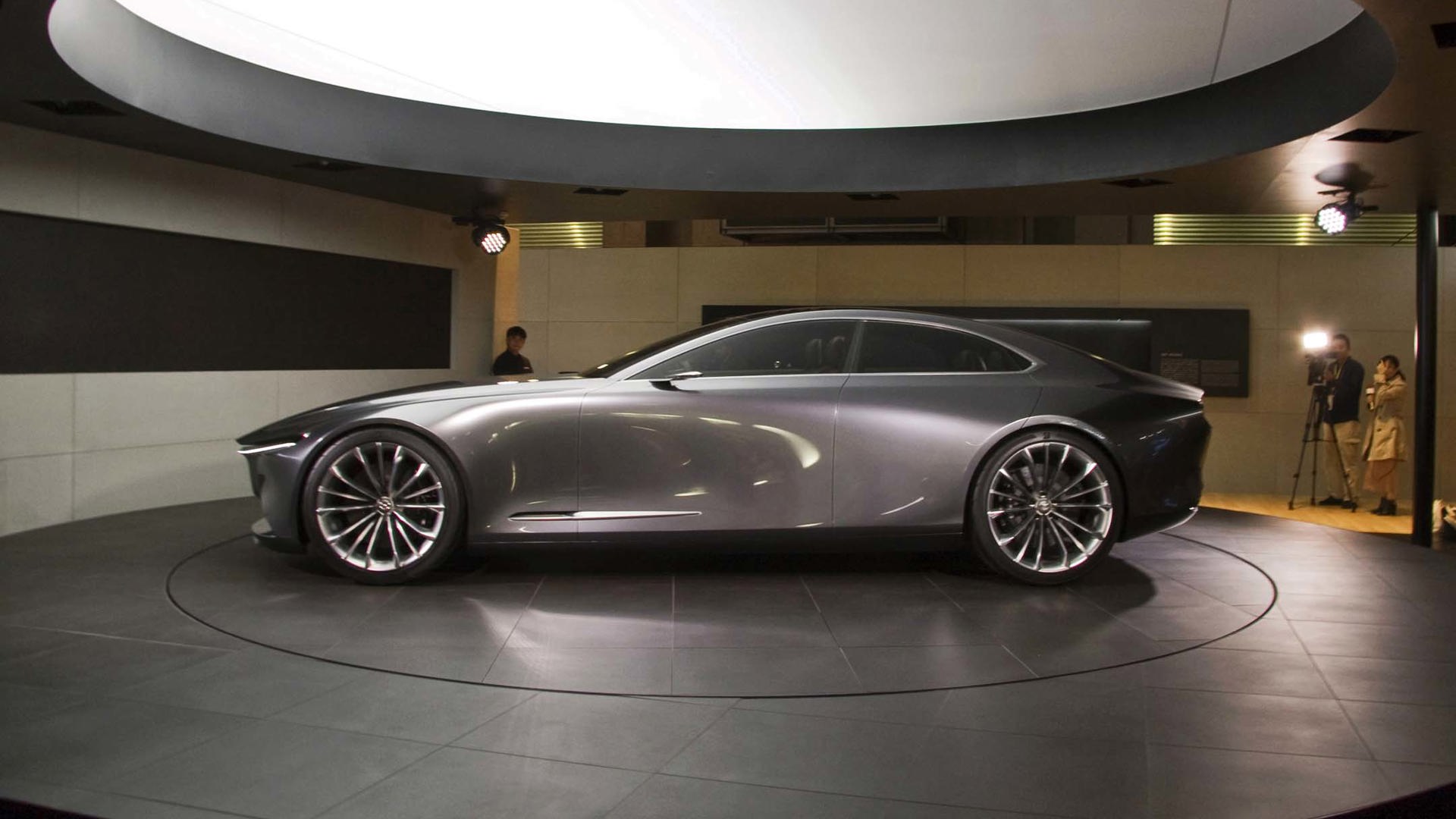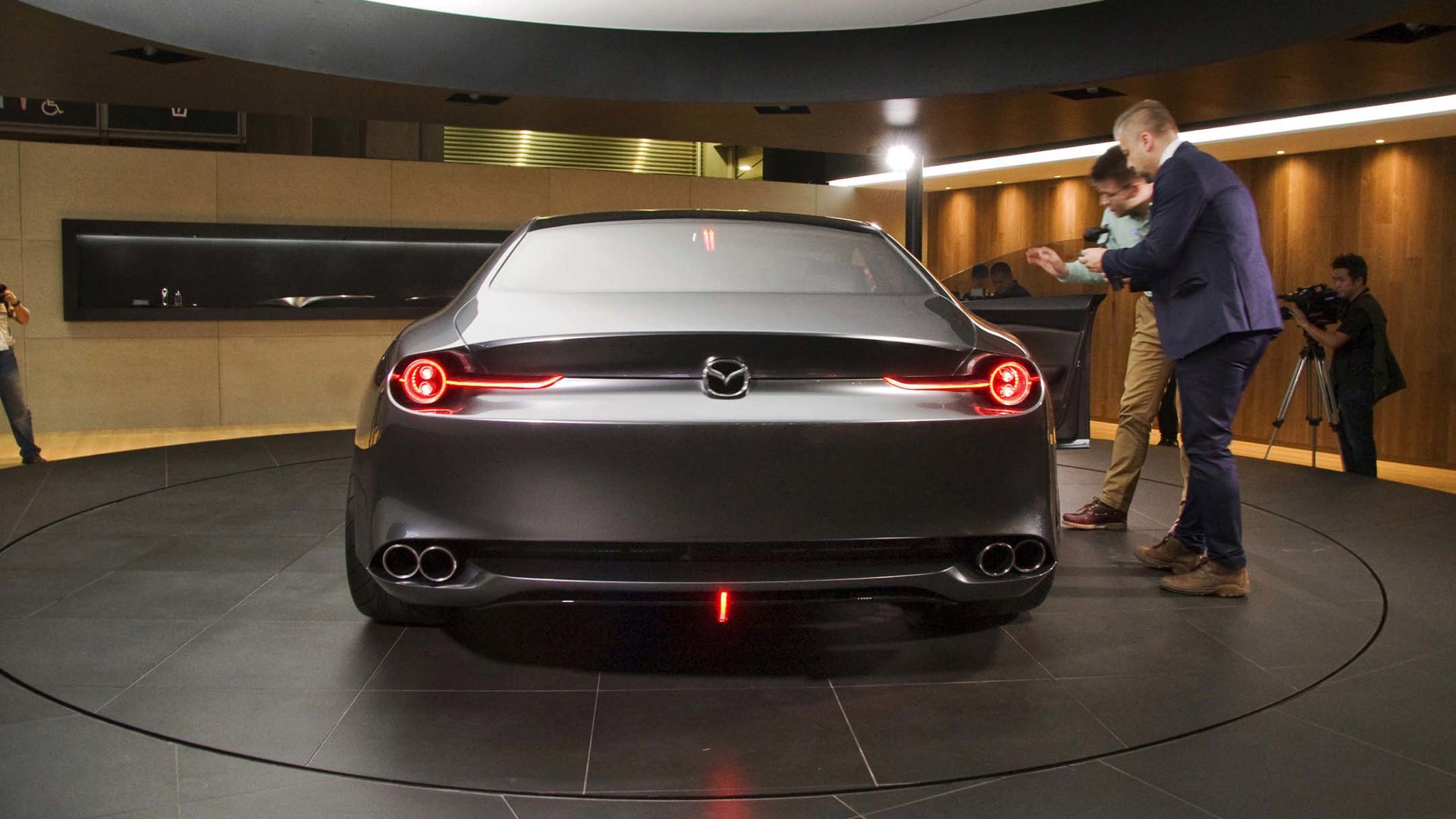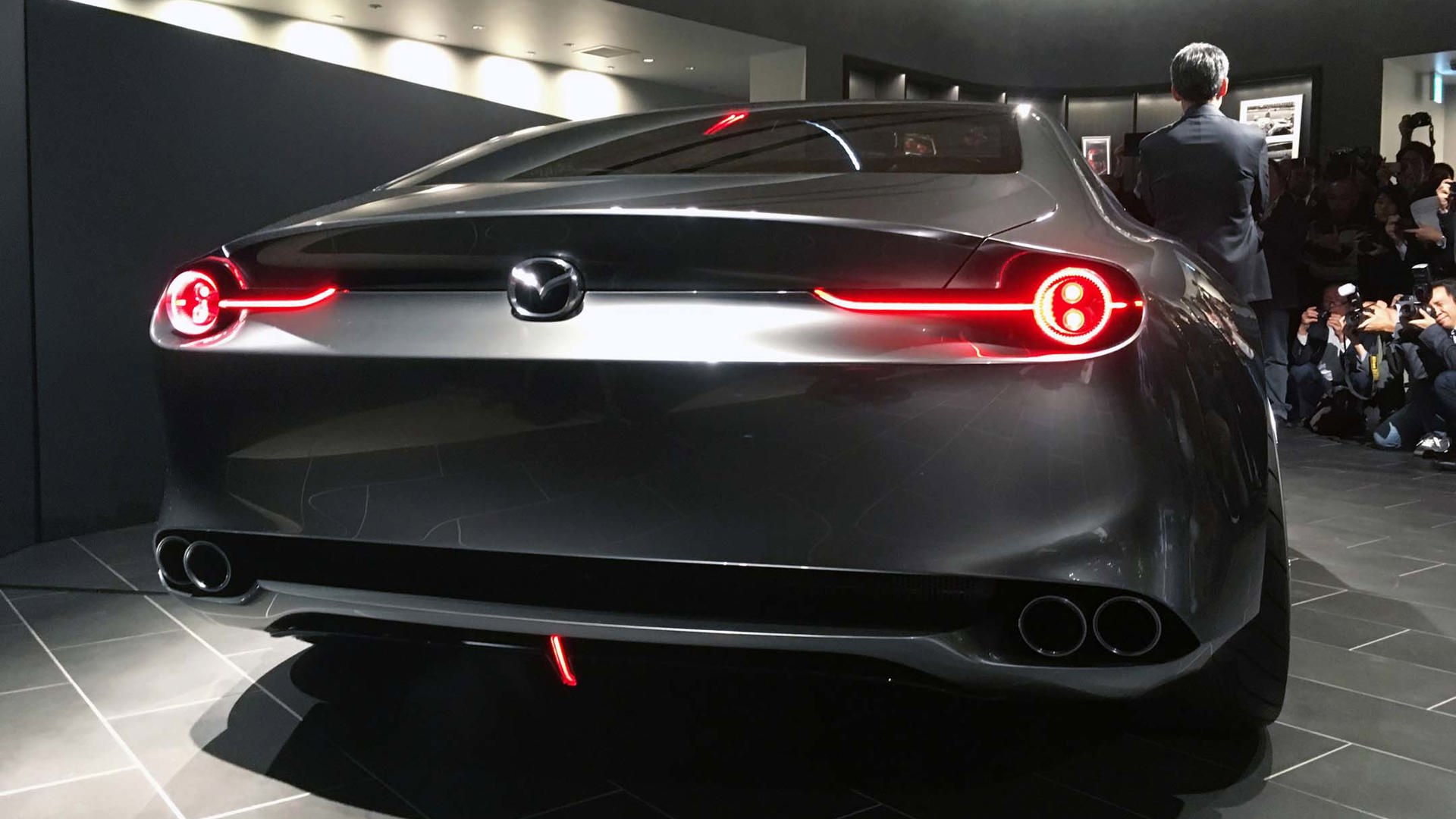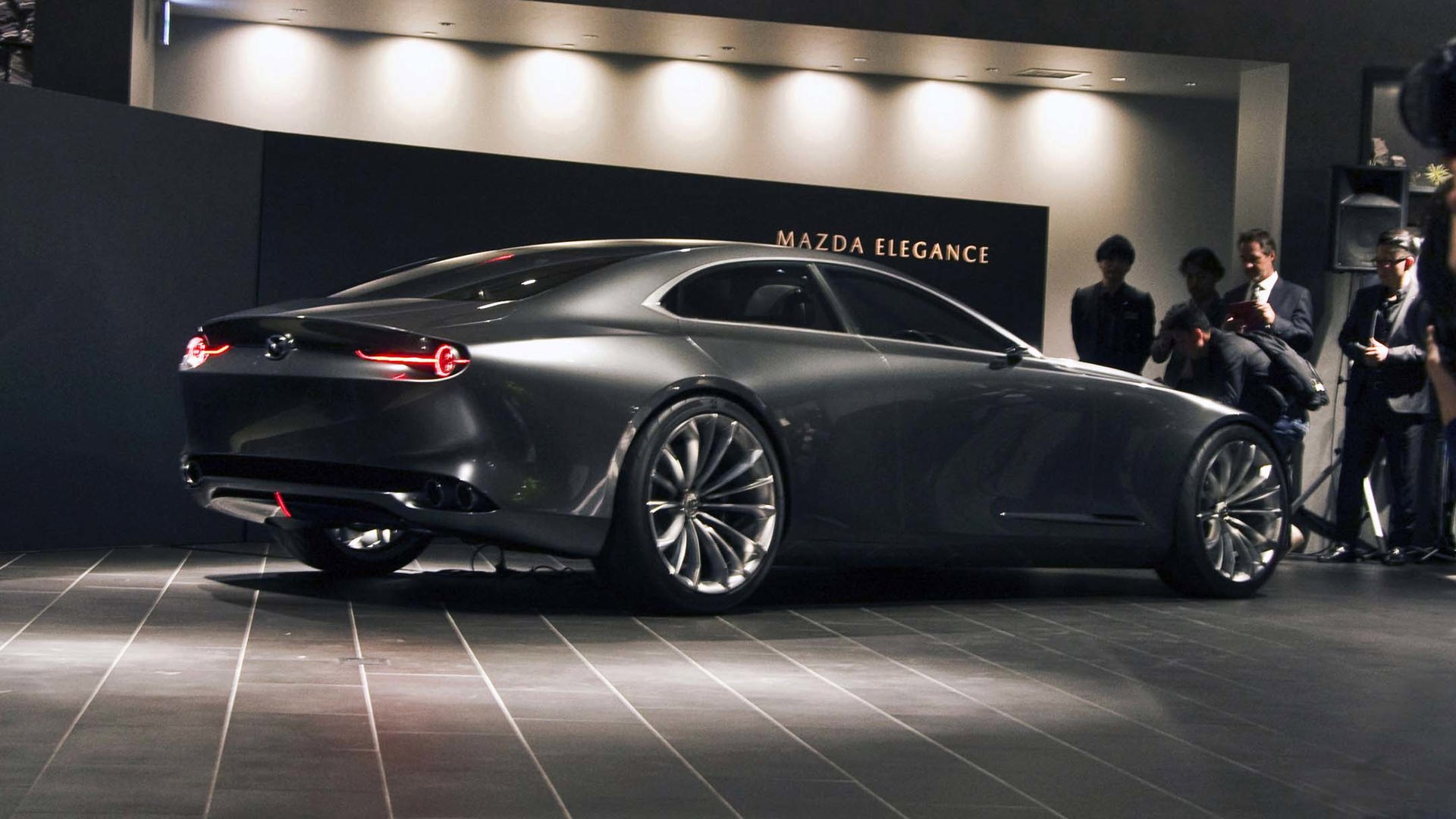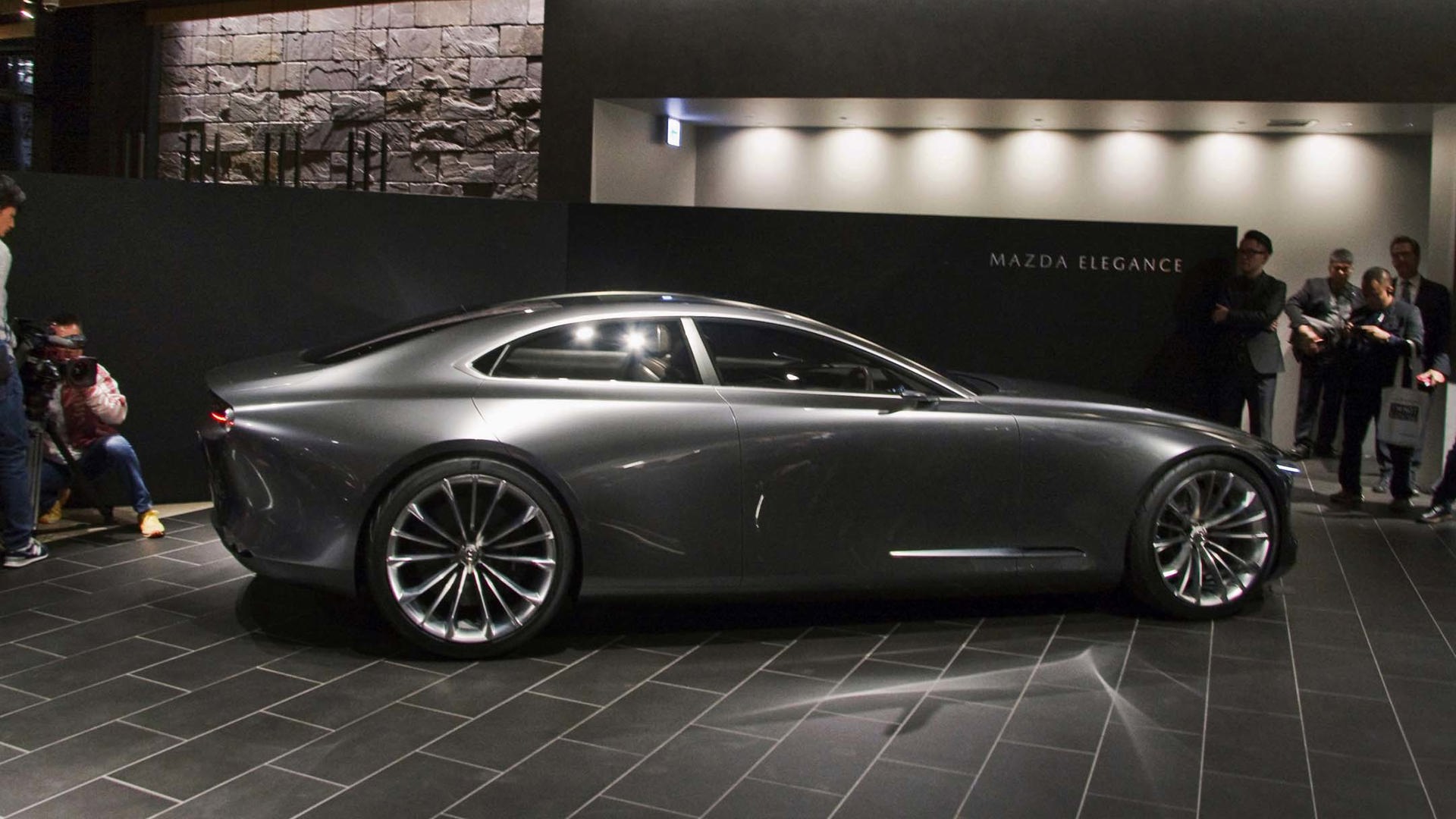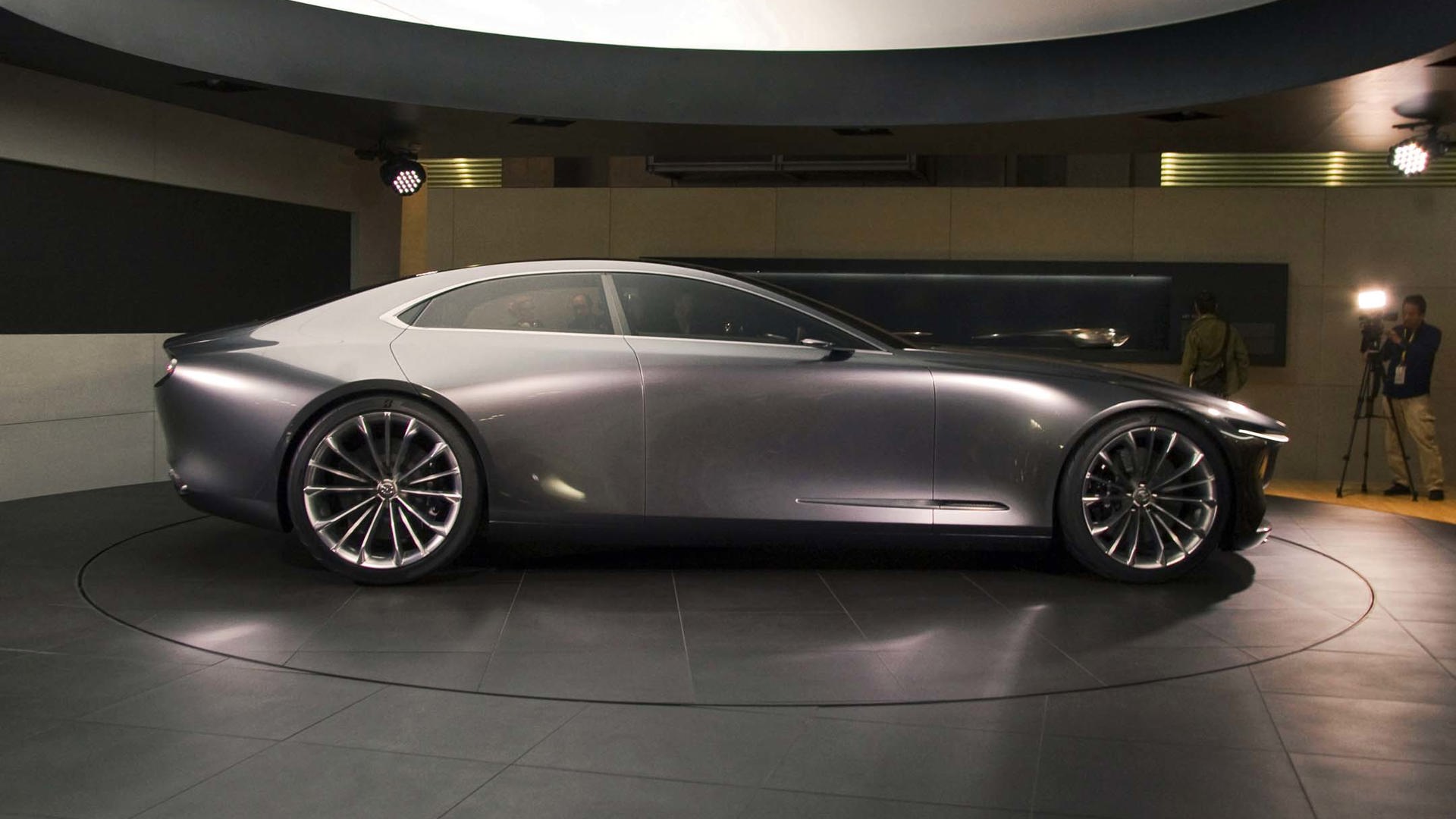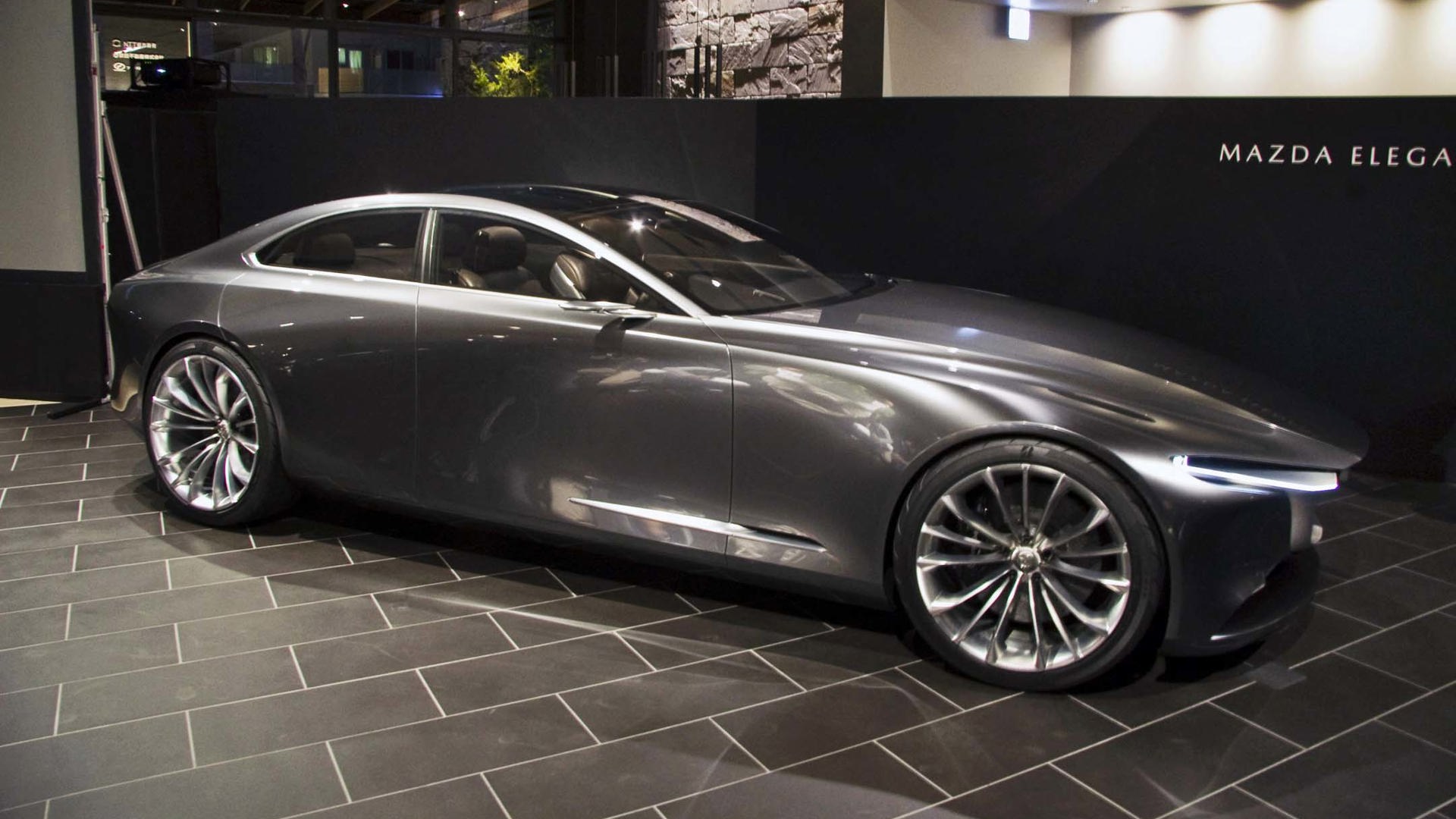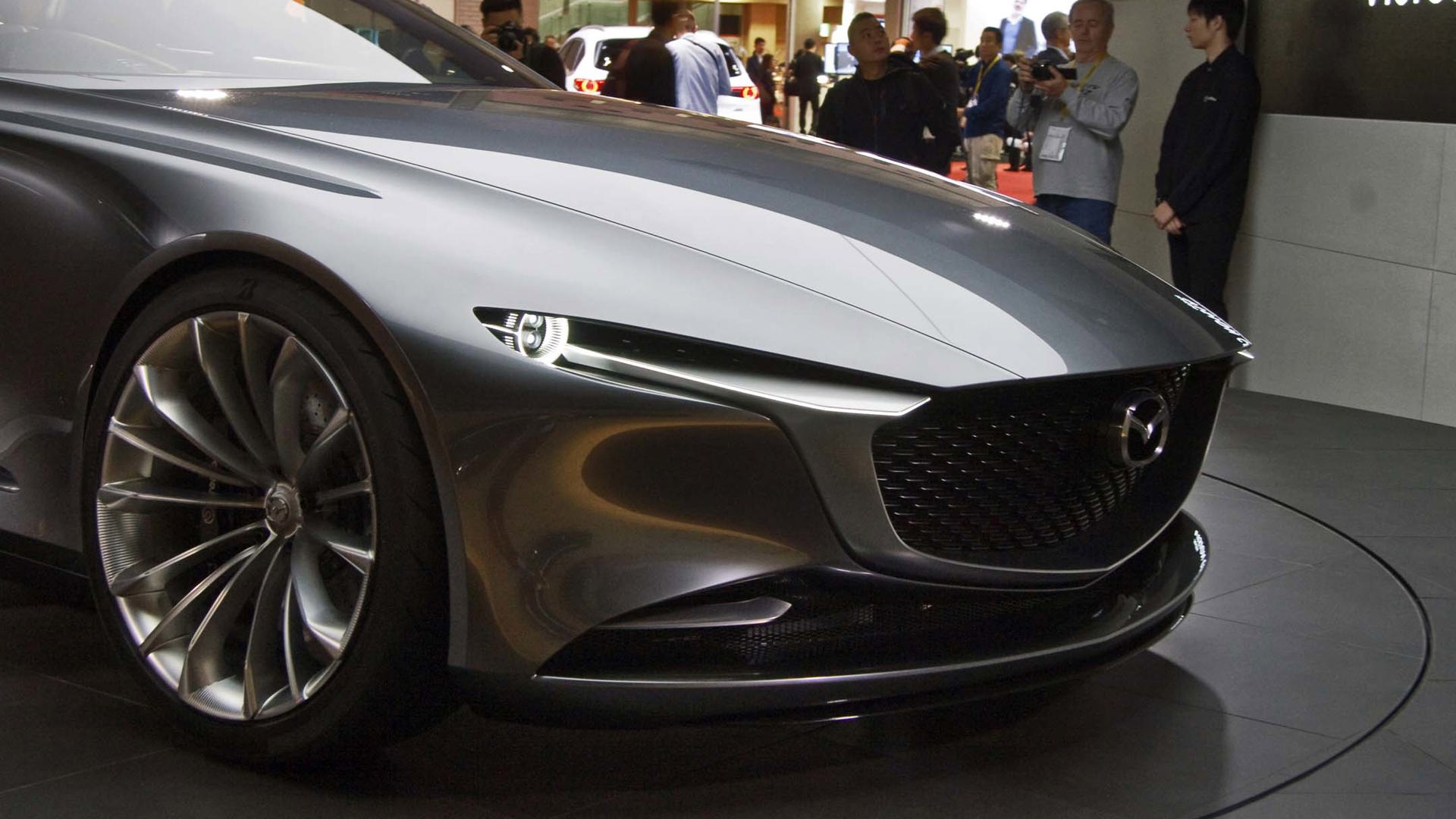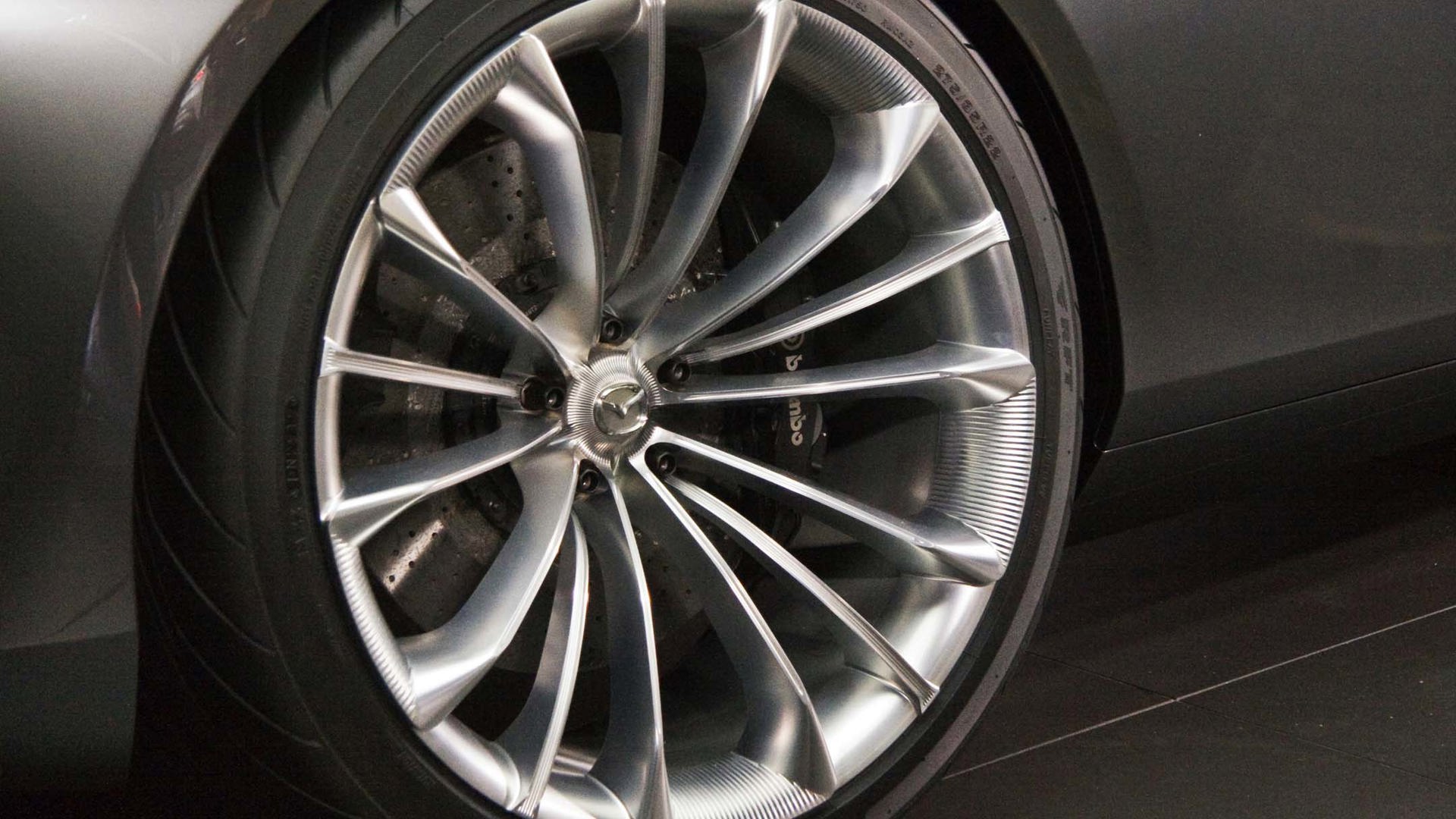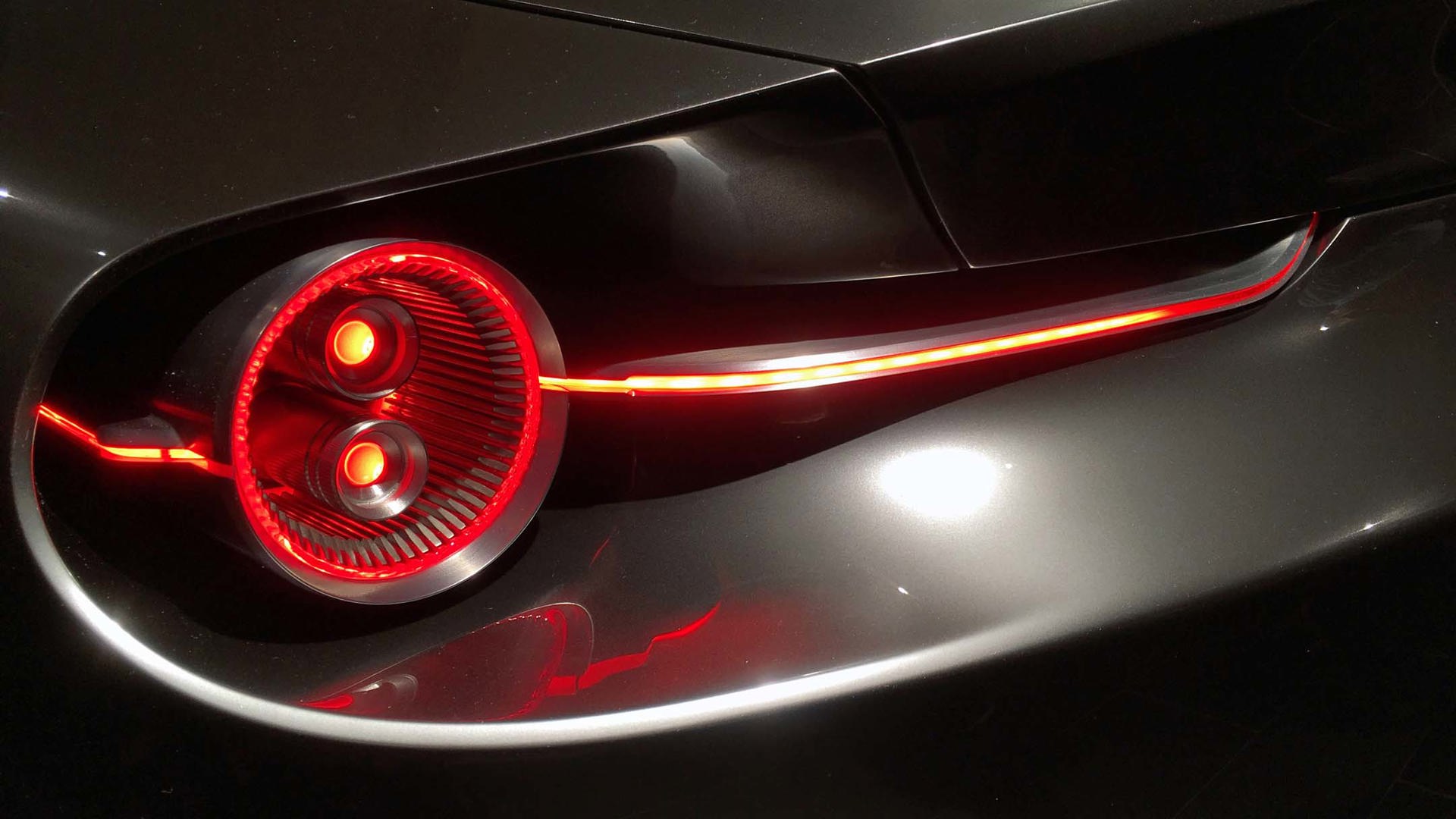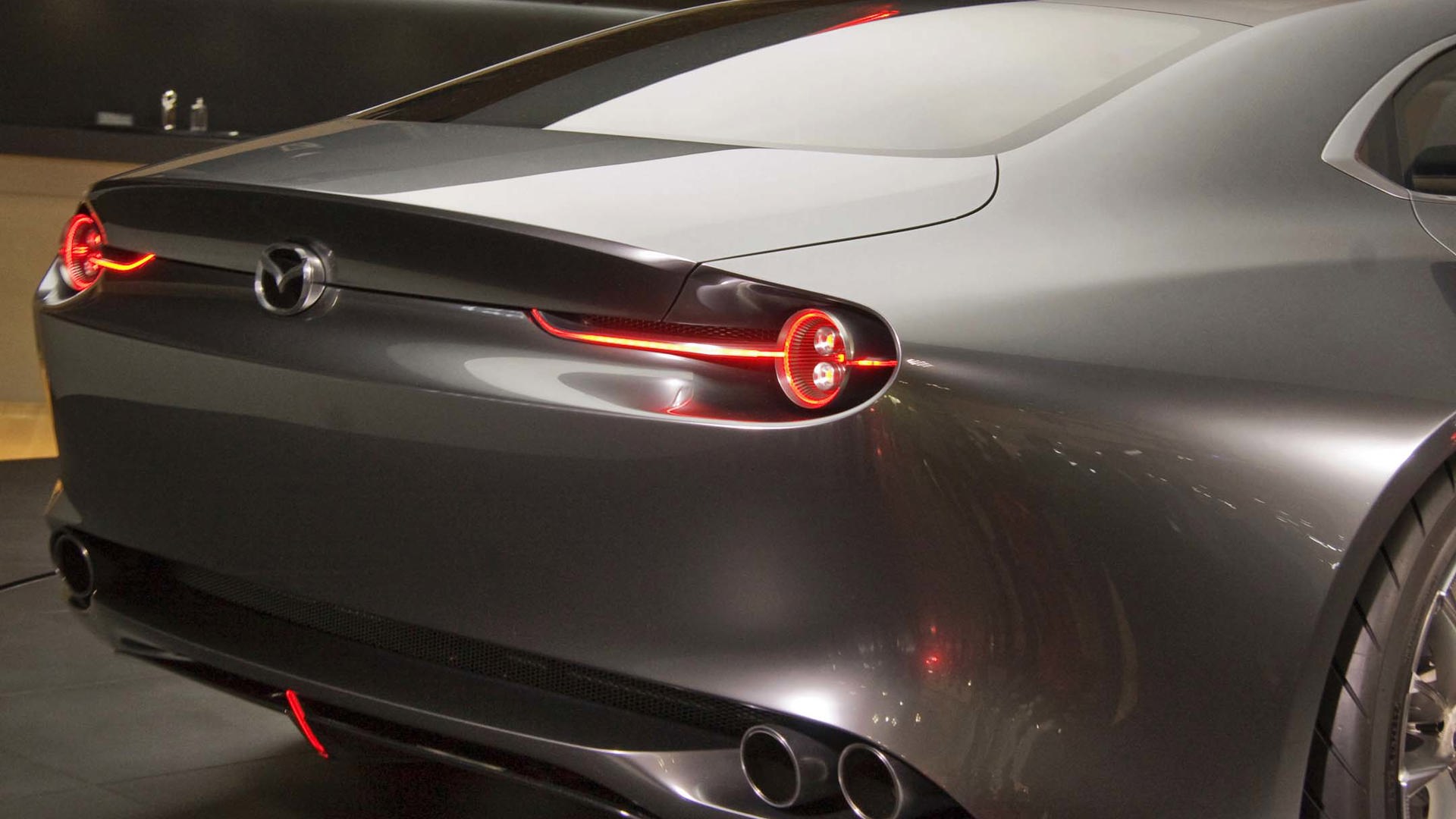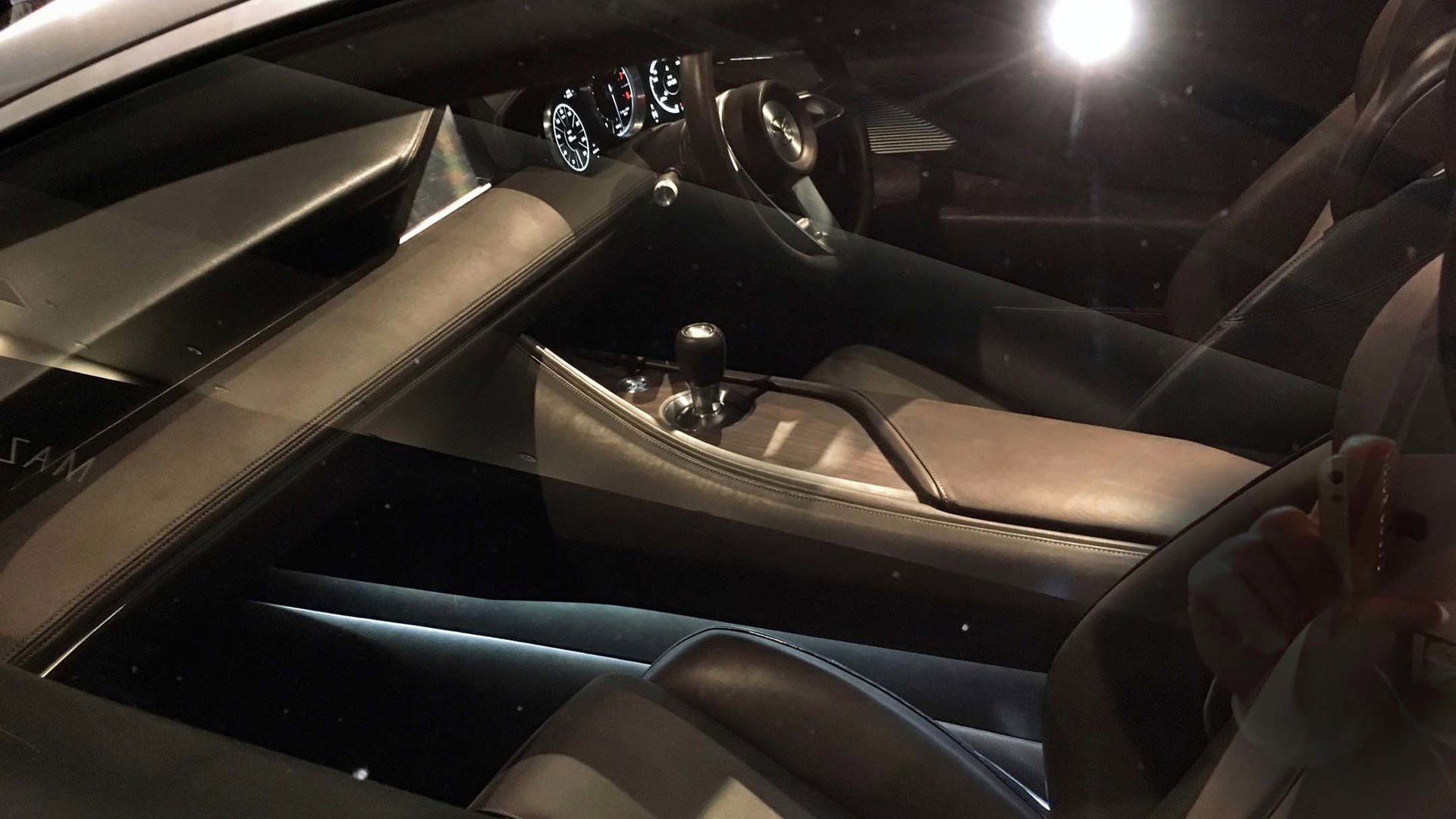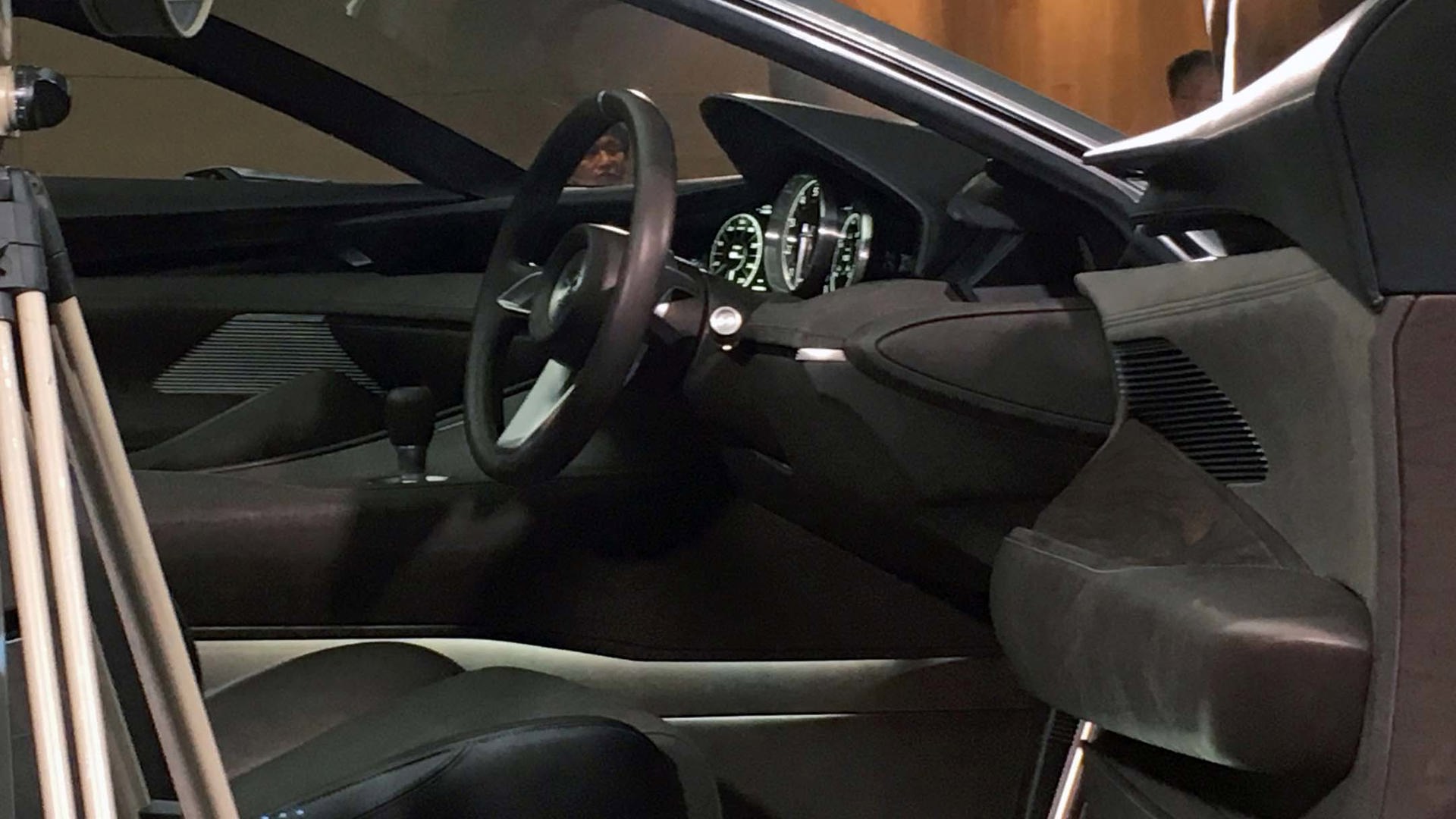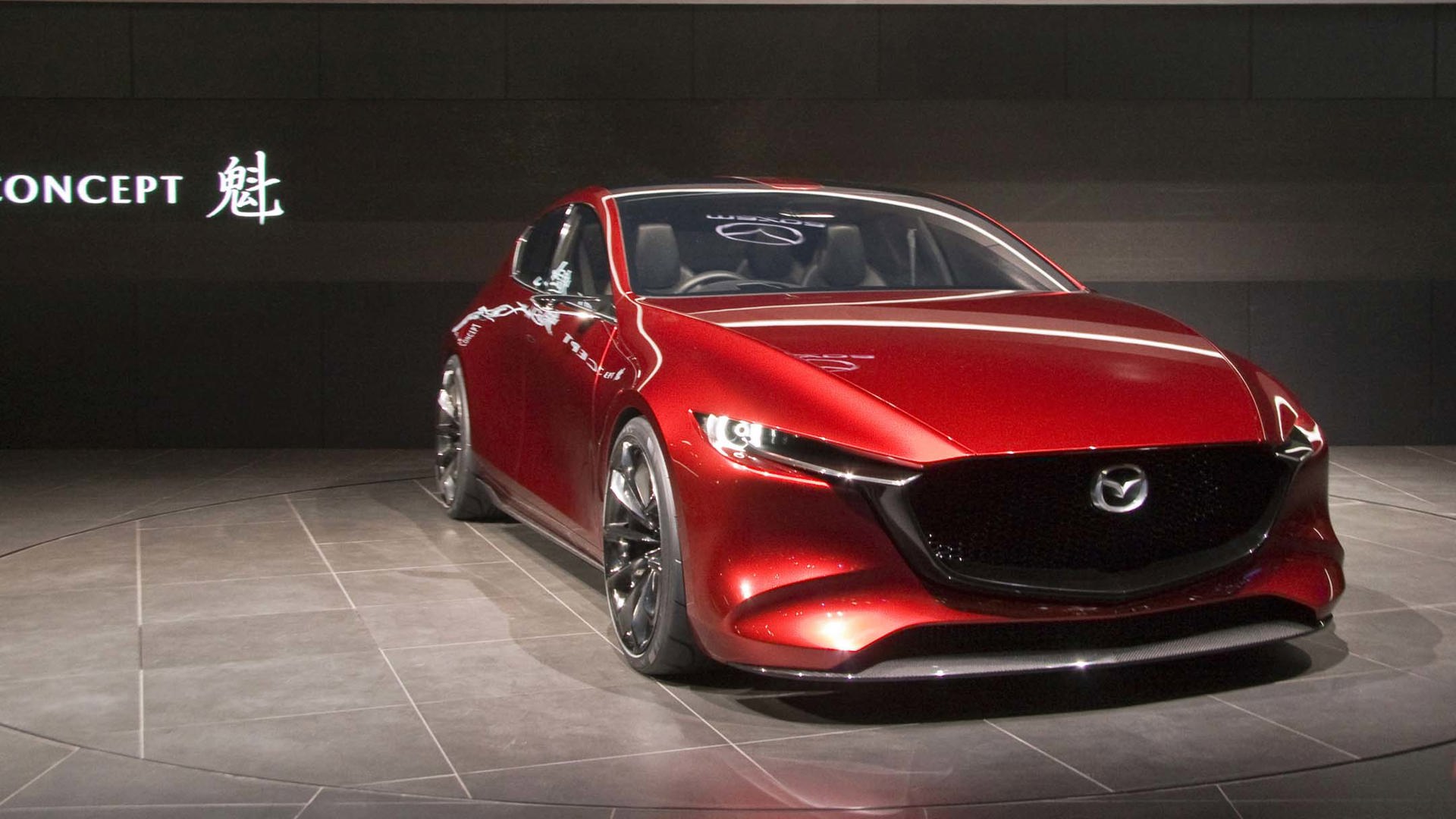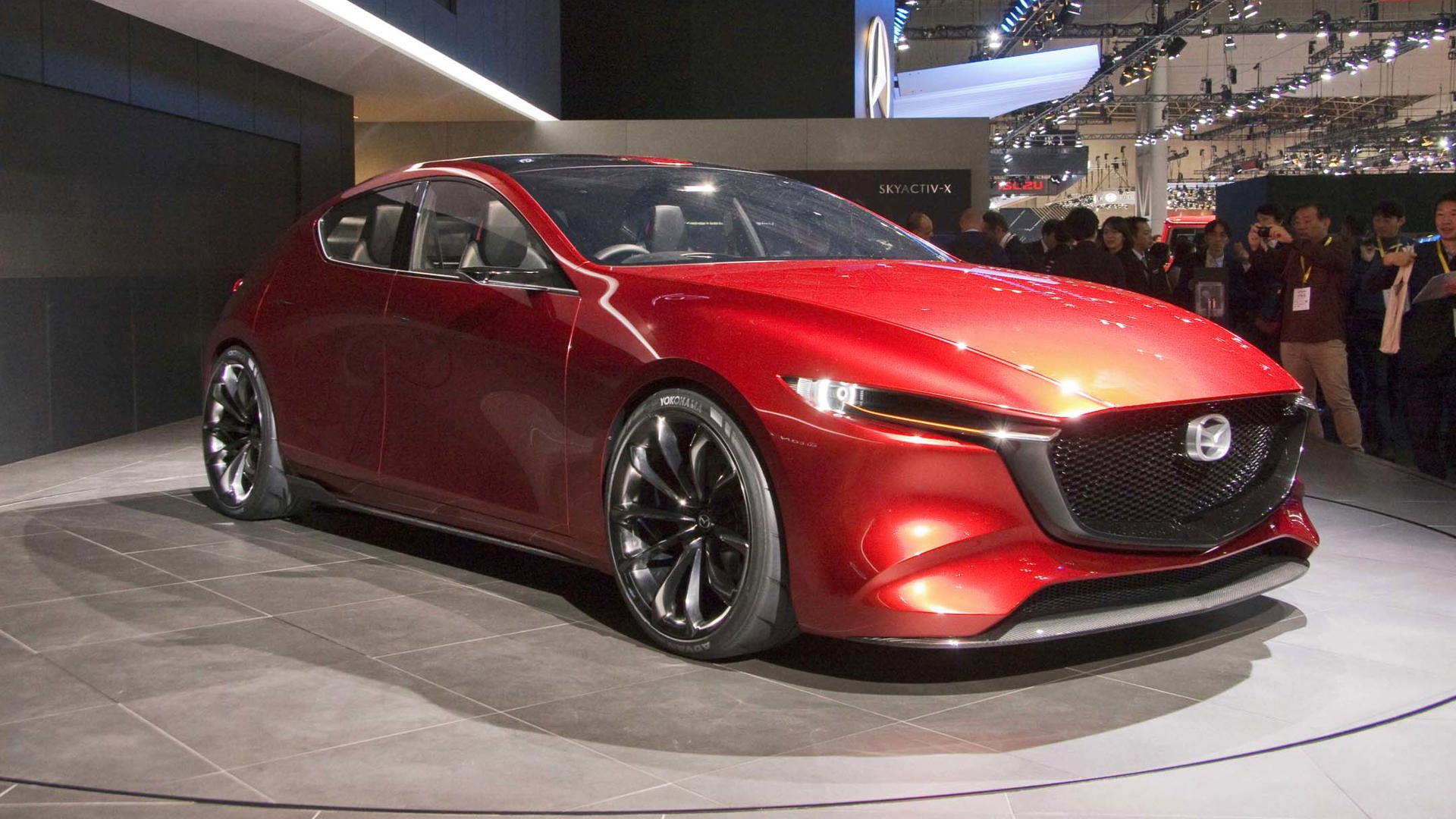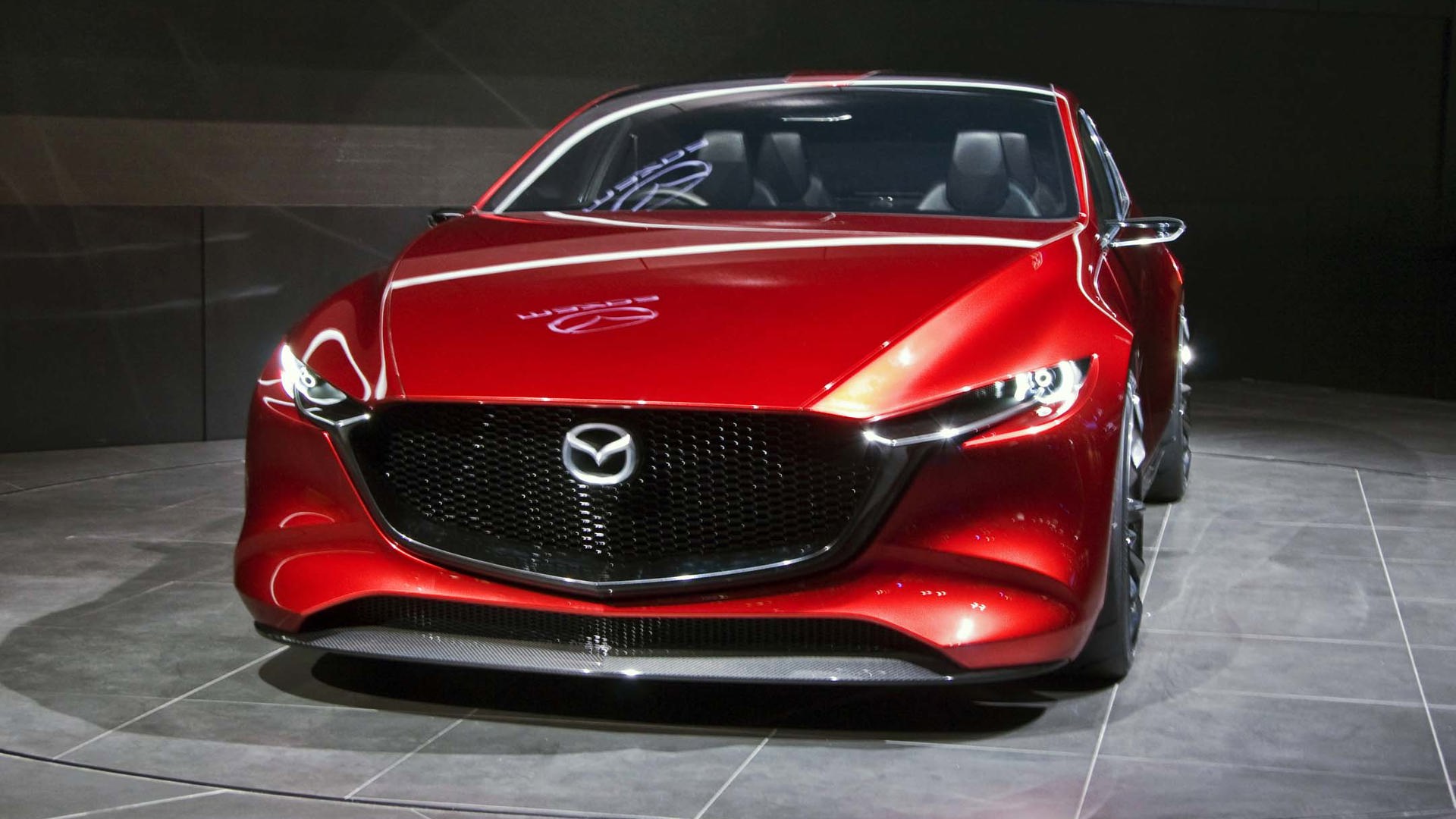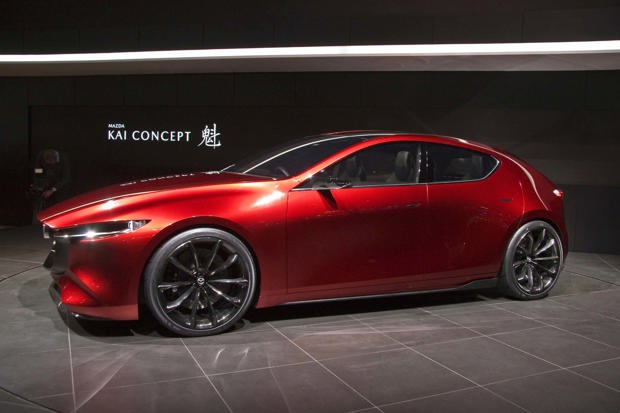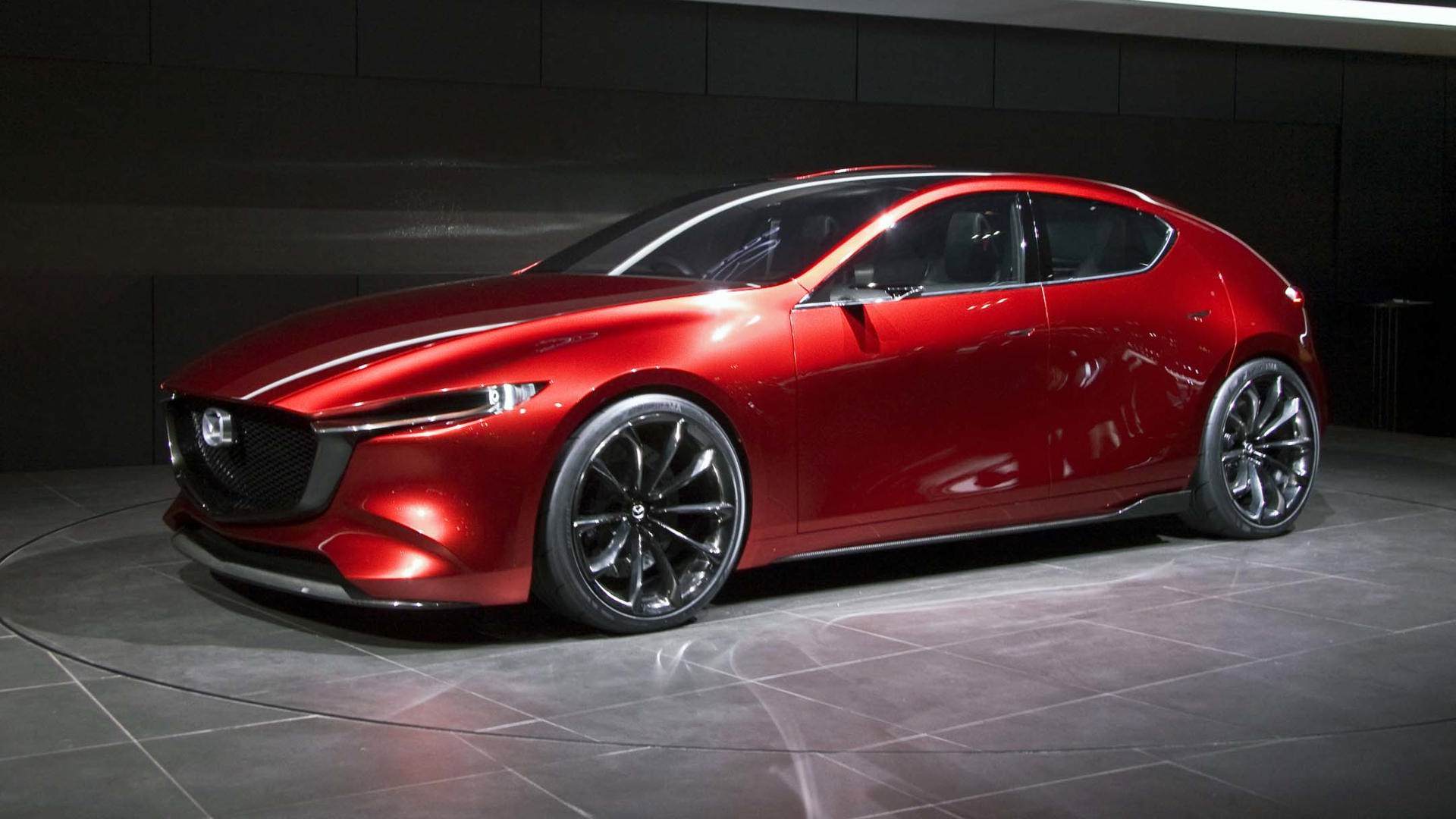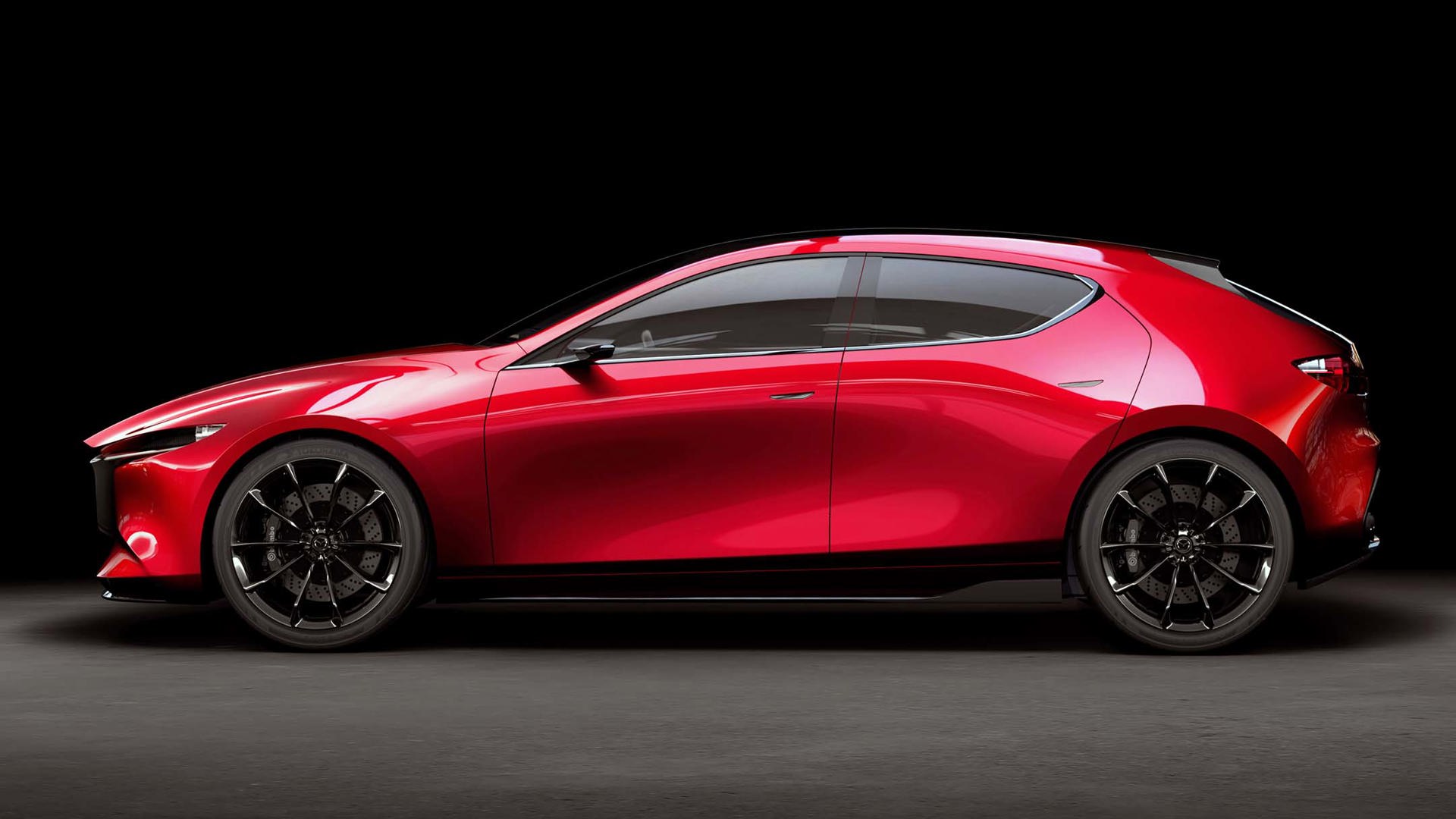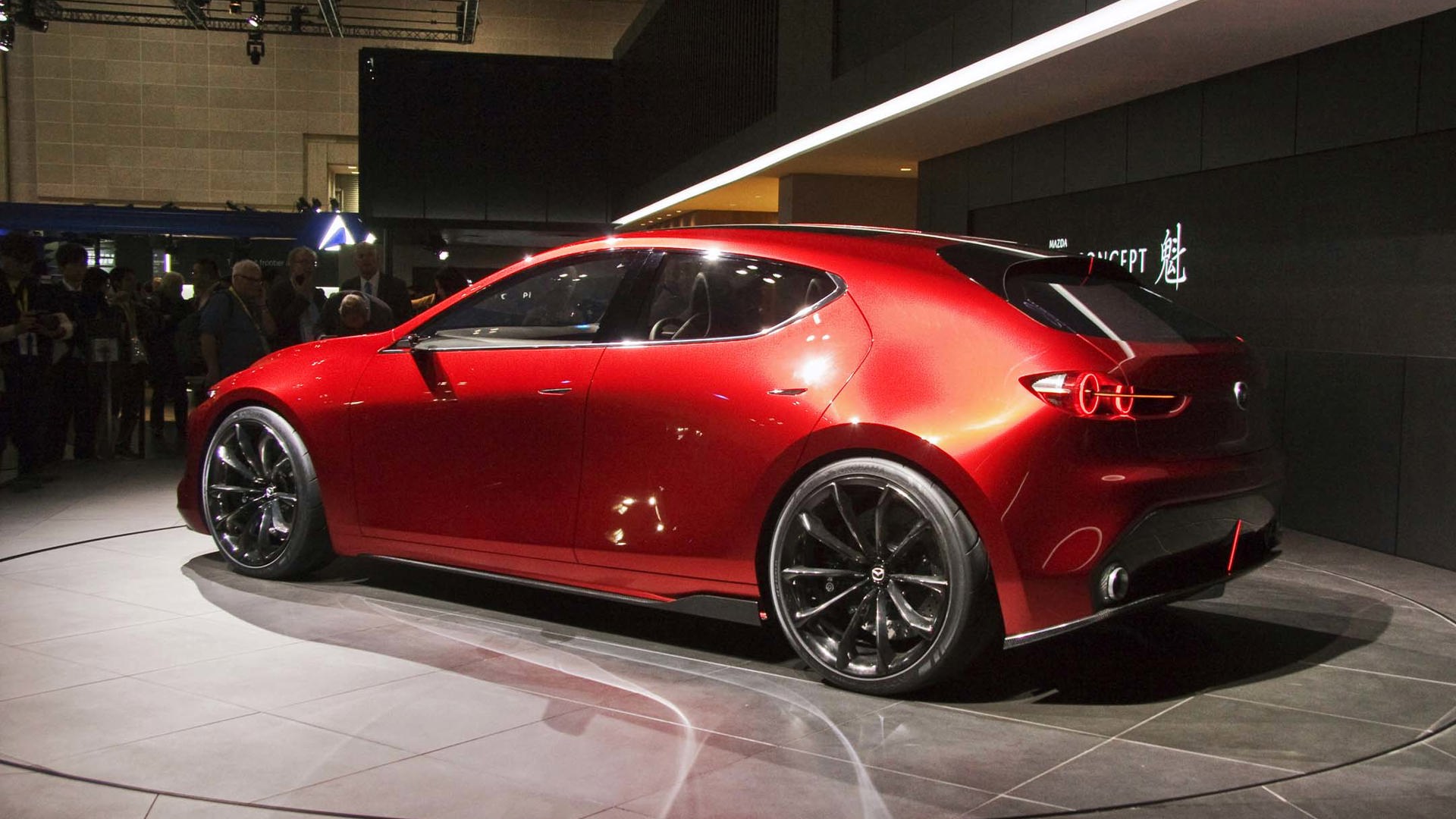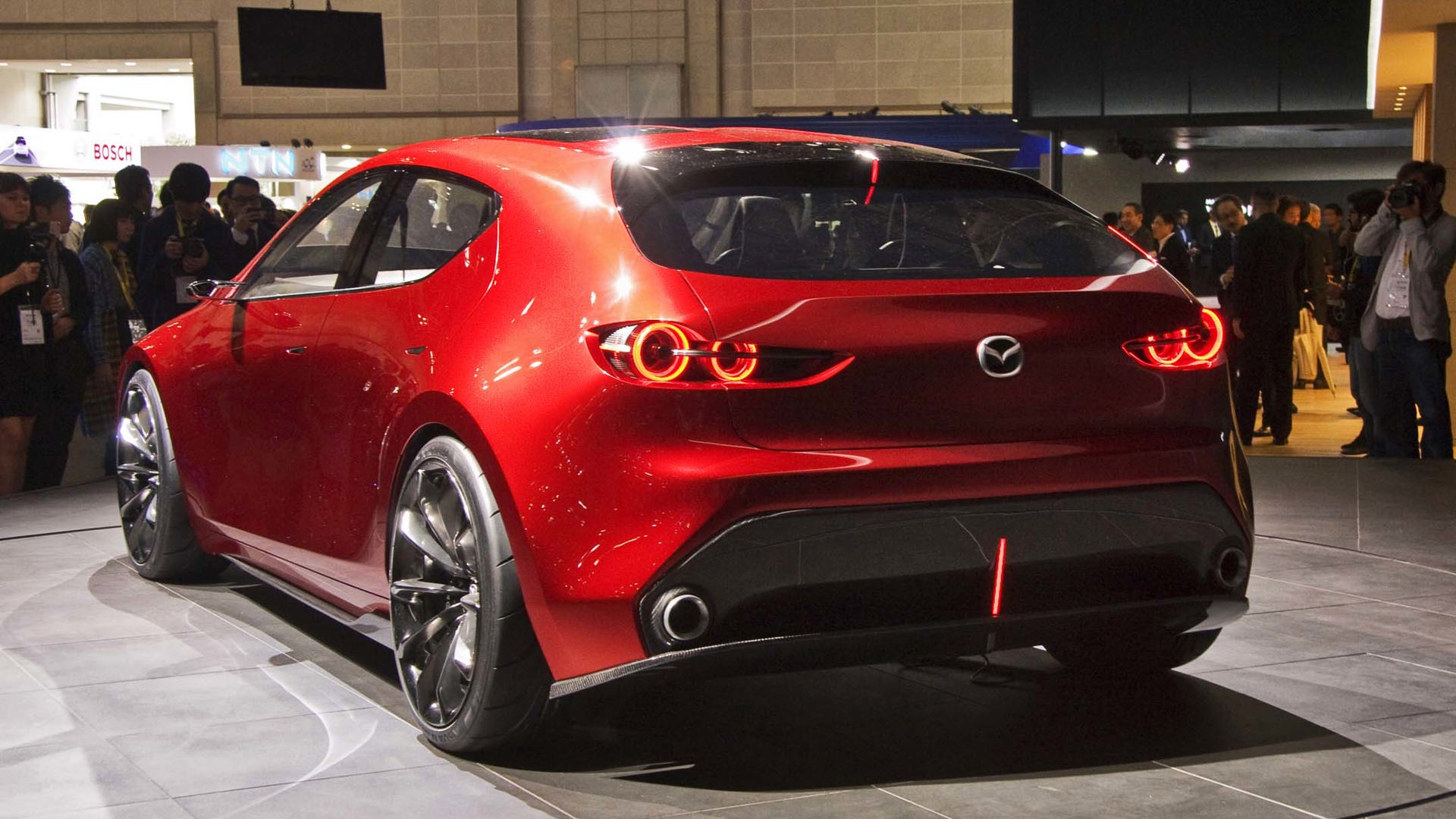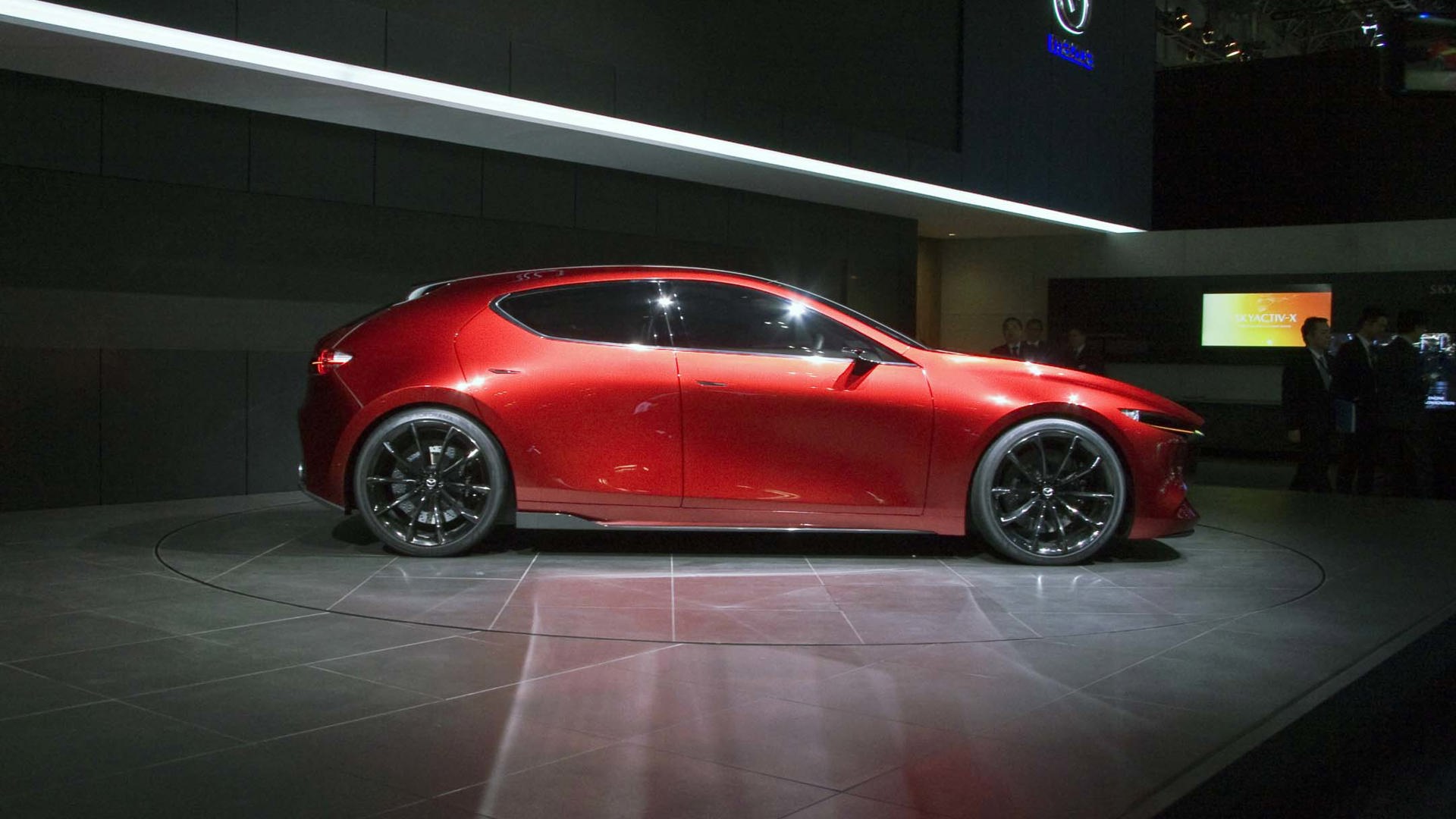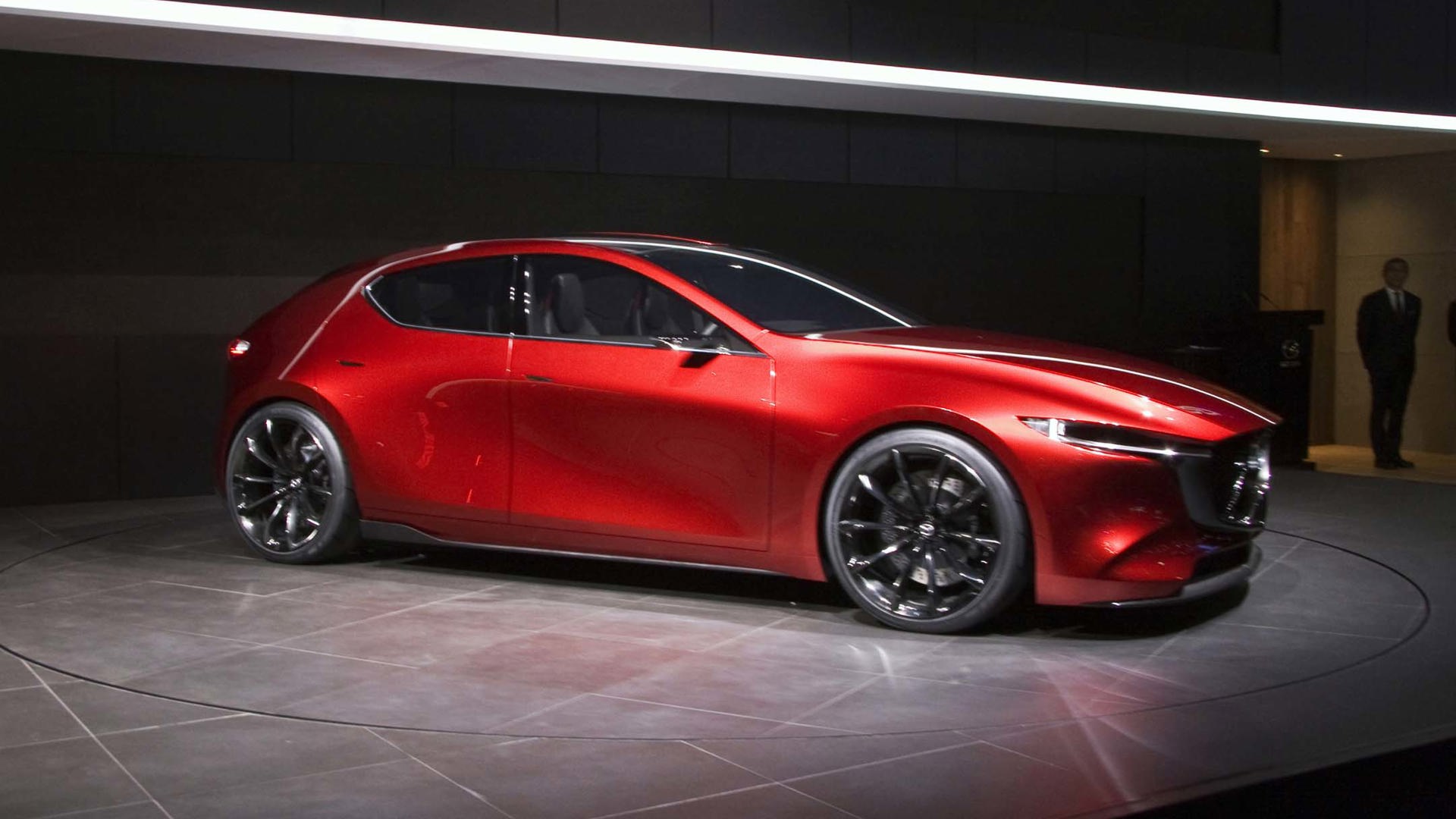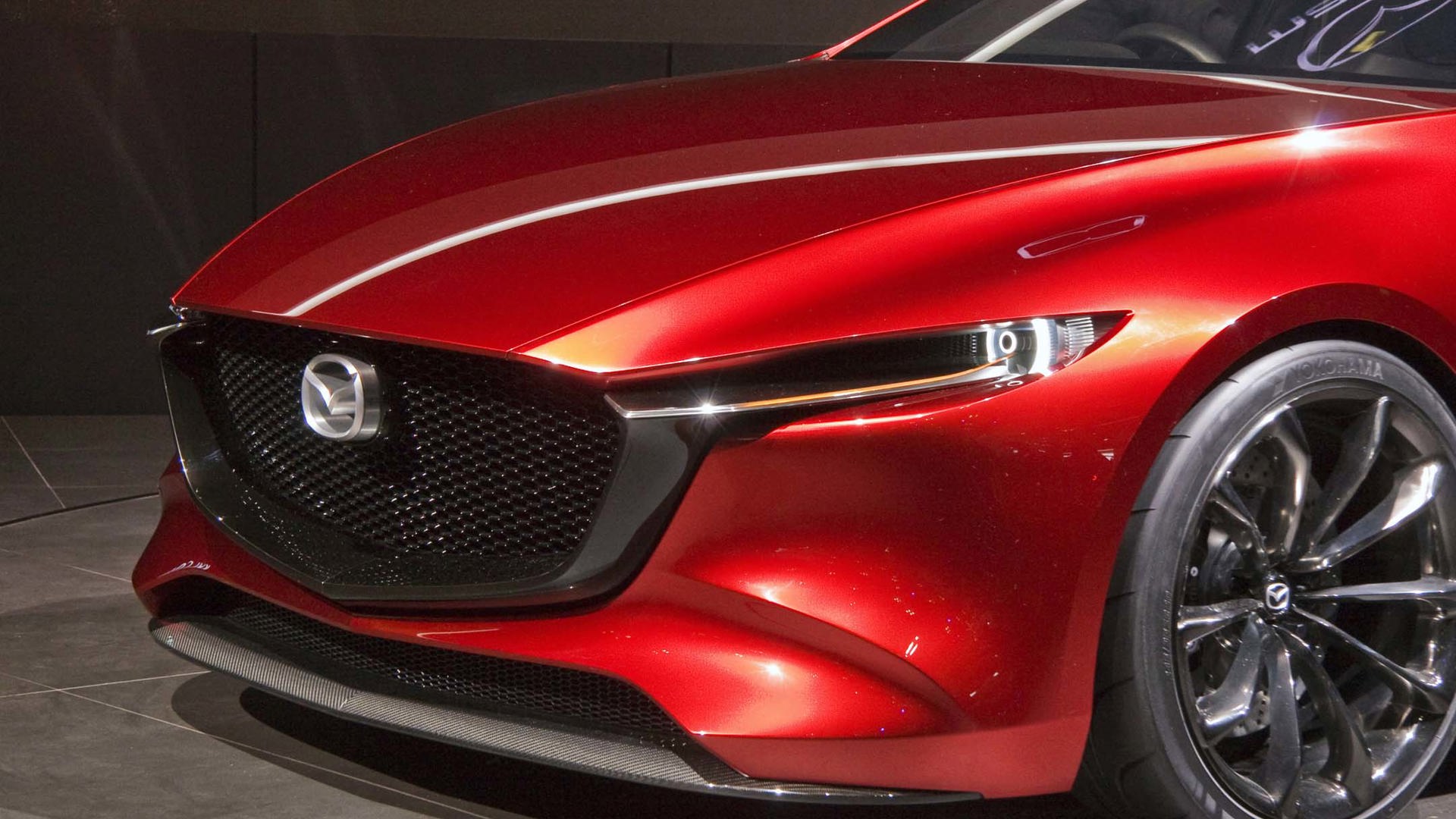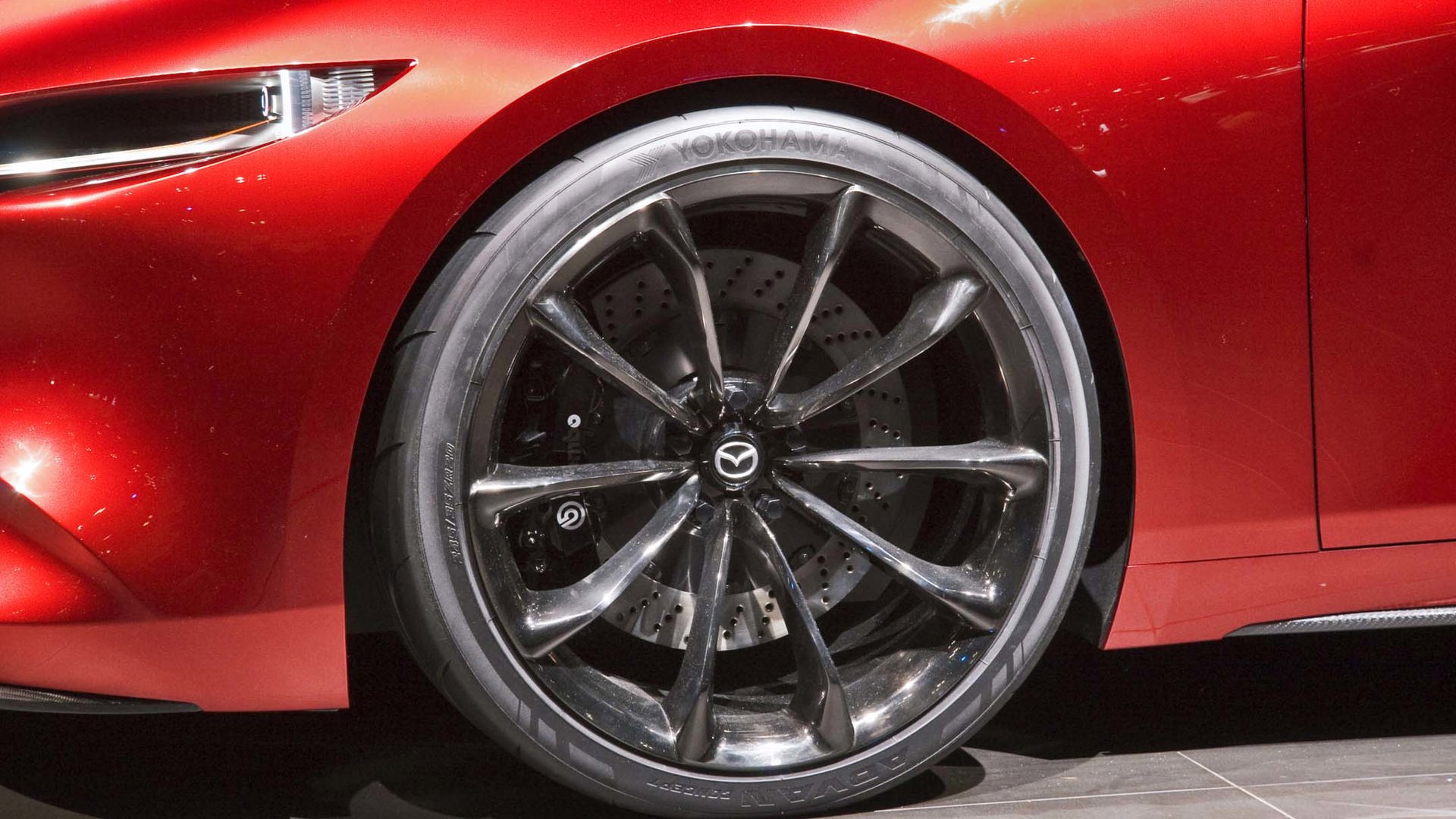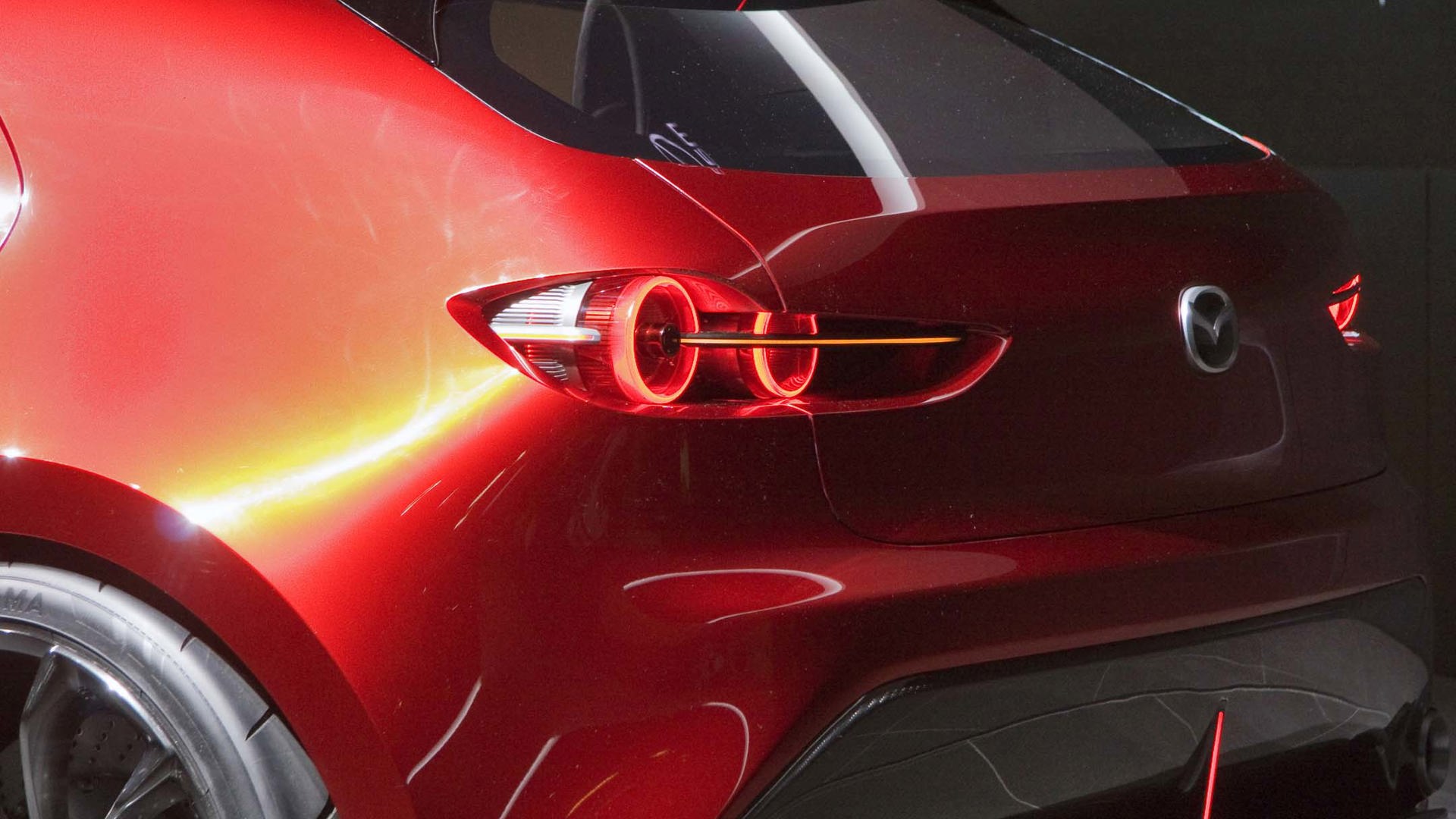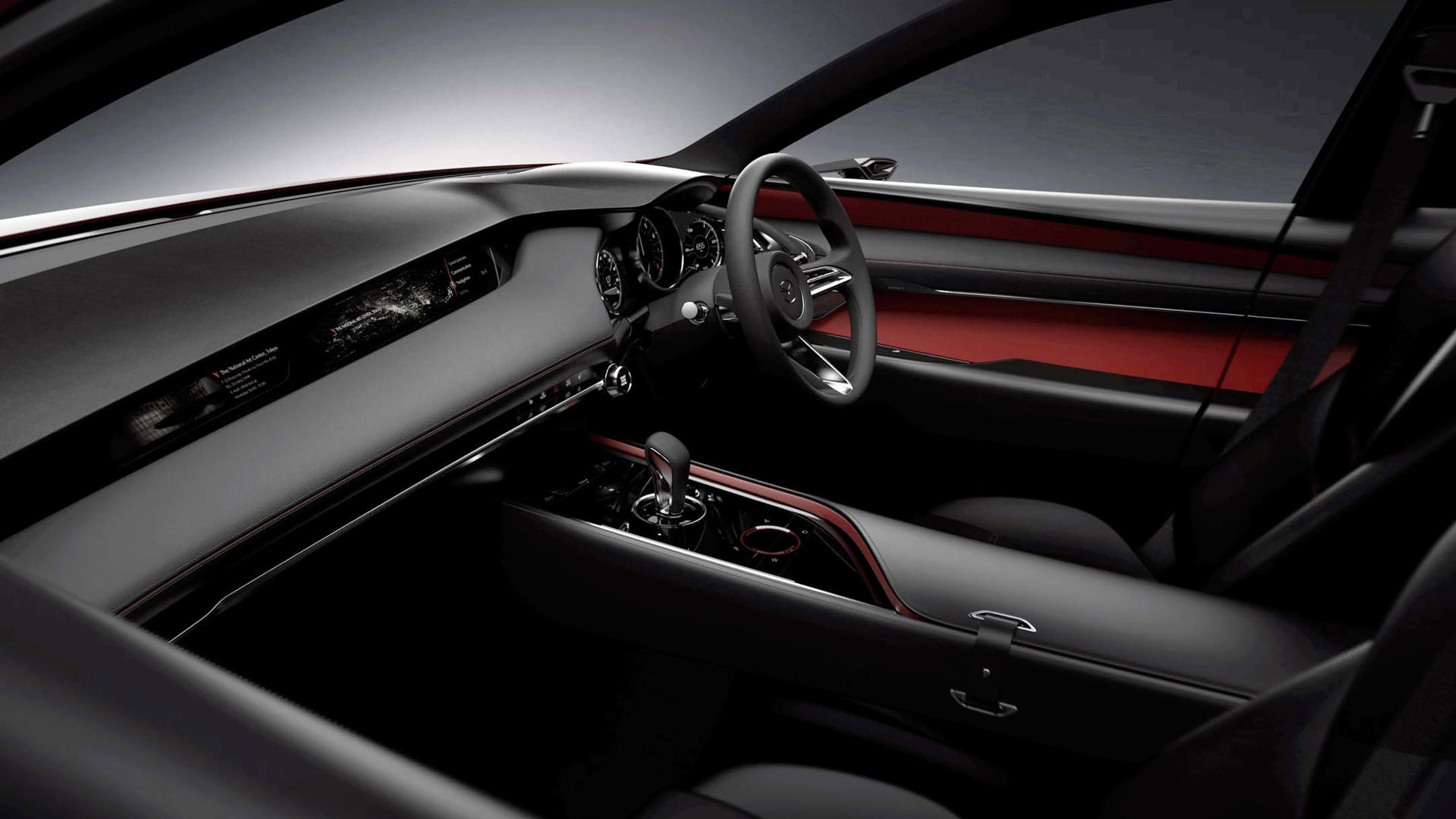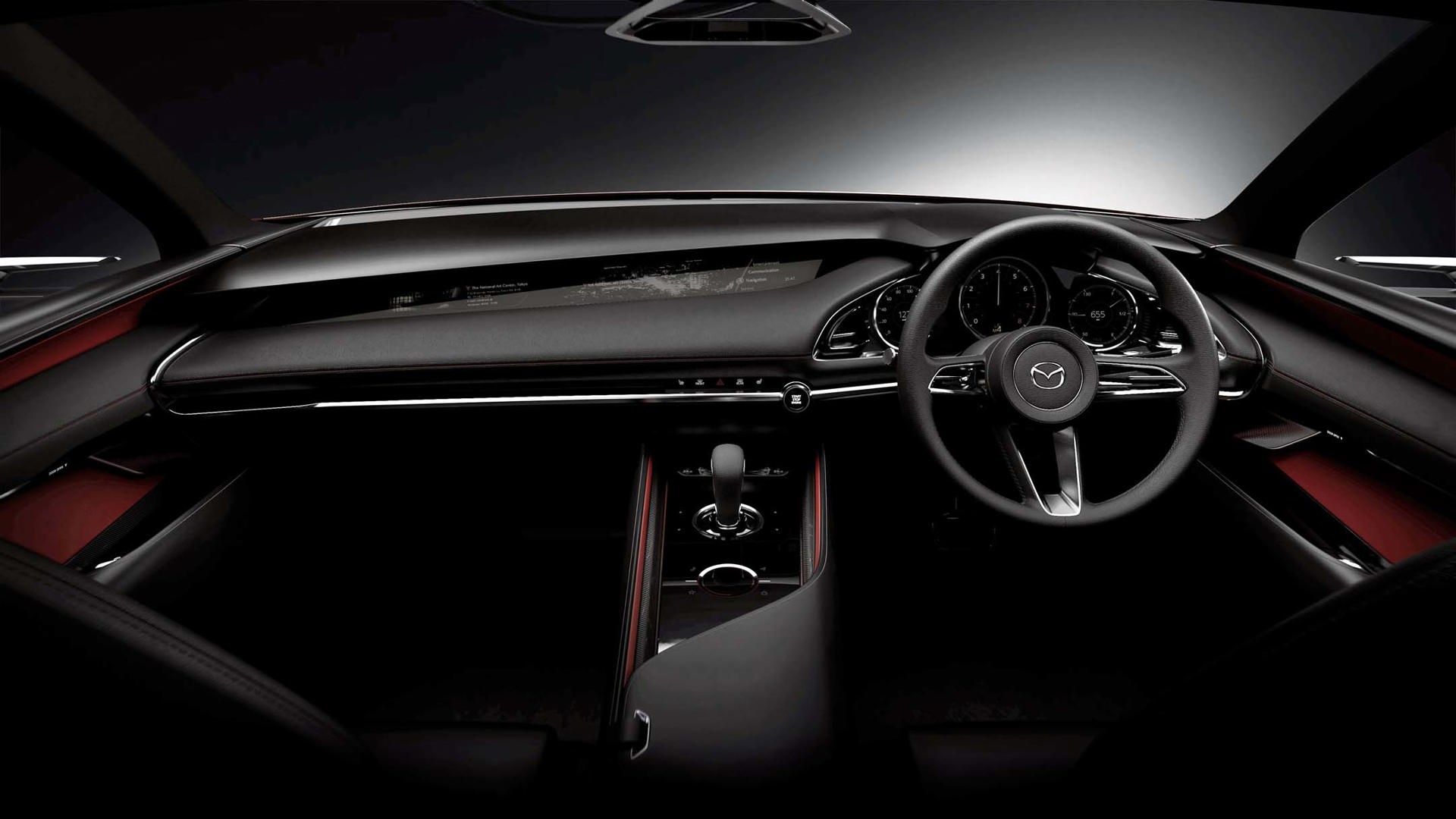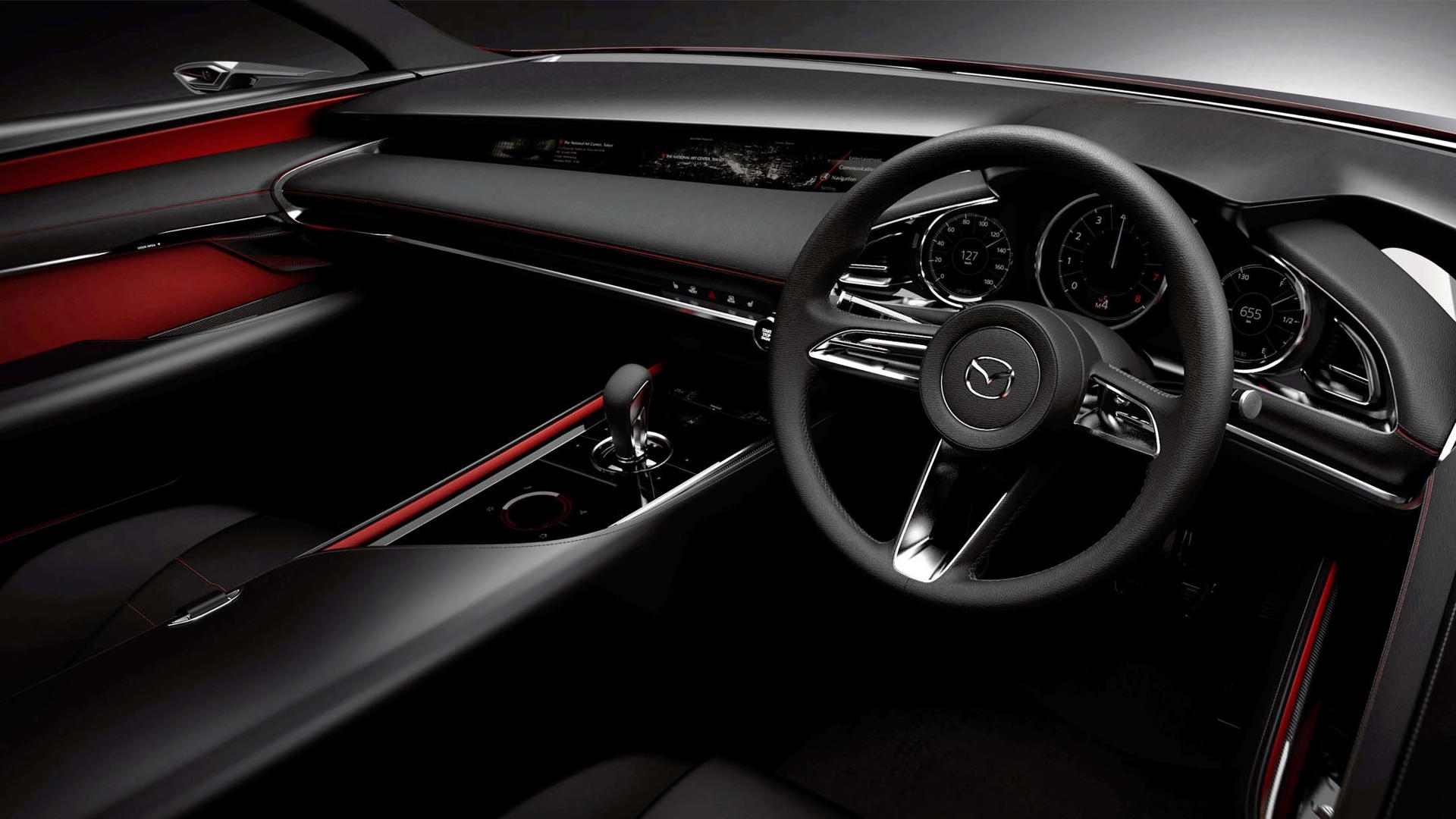TOKYO, Japan – In two concepts shown at Tokyo’s Motor Show, Mazda revealed a new direction for their Kodo design ethos, with a minimalist, more Japanese aesthetic.
If the Tokyo show was a good indicator, the Japanese brands are currently undergoing a design renaissance, returning to traditional simplicity by drawing on their cultural heritage. There’s a sparseness of line, describing more what isn’t there, than what is. The linear perfection of a raked Japanese rock garden or the ascetic serenity of a Buddhist temple are defined by an absence of superfluous line.
Mazda says the primary inspiration for their Vision Coupe concept was the sori – the sublime curvature of a Japanese samurai blade. This “coupe” is an embodiment of Kodo’s new direction, a showcase of all the elements in the latest evolution of their design language – an ethos that eschews the previous angles, slashes, and dramatic intakes for graceful simplicity.
The long nose and short rear deck hark back to the traditional grand tourer, and so balanced are its proportions that it’s not immediately apparent that the Vision is a four-door sedan. The tapered rear end is evocative of Ferrari or Aston Martin’s GTs. Visual drama is generated by reflections in the sheet metal, created by subtle convex curves of its flanks. Simple, elegant, yet stunning in execution, the Vision signals Mazda’s intent to elevate their brand into a more mature, more premium territory. It’s unlikely that we’ll ever see it reach production in its entirety, but it’s a good bet that the Vision will influence the next Mazda6 and whatever else Mazda’s got coming down the pipeline.
The low-slung Vision Coupe was undoubtedly one of the biggest stars of the Tokyo show. But it was Mazda’s smaller Kai Concept, unveiled with slightly less fanfare, that is arguably more important. The compact hatchback, resplendent in candy-apple red, is a portent of the next Mazda3 to come. It shares strong familial design elements with the Vision in a pared-down package. Sleek curves embrace wheels pushed out to each corner, and it culminates in the same tidy, premium grand-tourer rear end as its elegant sibling.
Both cars feature cabins rendered with simple precision, sparse yet carefully considered with clean lines. It’s an environment without distraction, freeing up the driver to concentrate on the road.
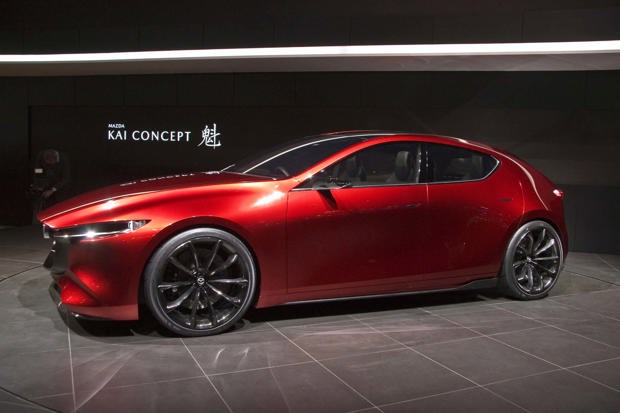
While each is underpinned by the second-generation SkyActiv architecture, the forthcoming Mazda3 will be the first production car built on the platform that all of Mazda’s future lineup will ride upon.
But even more importantly, the new Mazda3 will mark the debut of the groundbreaking SkyActiv-X – the world’s first production engine to use a revolutionary Spark-Controlled Compression Ignition. Although it runs on gasoline, the SkyActiv-X borrows from diesel engine design, using conventional spark plugs to begin the combustion process, then high compression to complete the ignition. The result is a lean and clean air–fuel mixture with lower emissions that’s reportedly 35–40 percent more efficient than the previous SkyActiv.
The supercharged 2.0L four-cylinder can deliver from 10 to 30 percent better torque depending on rpm, like a diesel, yet spins as freely in higher rpm as a conventional gasoline engine. The holy grail of powertrains, this new engine combines the output and efficiency of a diesel with the performance and responsiveness of a typical gas engine.
In a conversation after the unveiling with Kiyoshi Fujiwara, Mazda Sr. Executive of R&D, we learned that a plug-in hybrid variant of the SkyActiv-X is on its way, as well as the possibility of a new rotary rear-wheel-drive sports car that may also be available as a hybrid. They’re also further experimenting with the development of hybrid powertrains with a rotary engine as a backup range extender.
Fujiwara reiterated Mazda’s belief that there’s currently still a place for further development of the internal combustion engine; that the best approach to conservation while still delivering the “joy of driving” is a blended portfolio of the best of both. “In some regions, probably an EV is better suited, but [for] some regions SkyActiv-X is enough. Therefore we need to develop both solutions if we are to keep the business growing globally. That’s our challenge.”
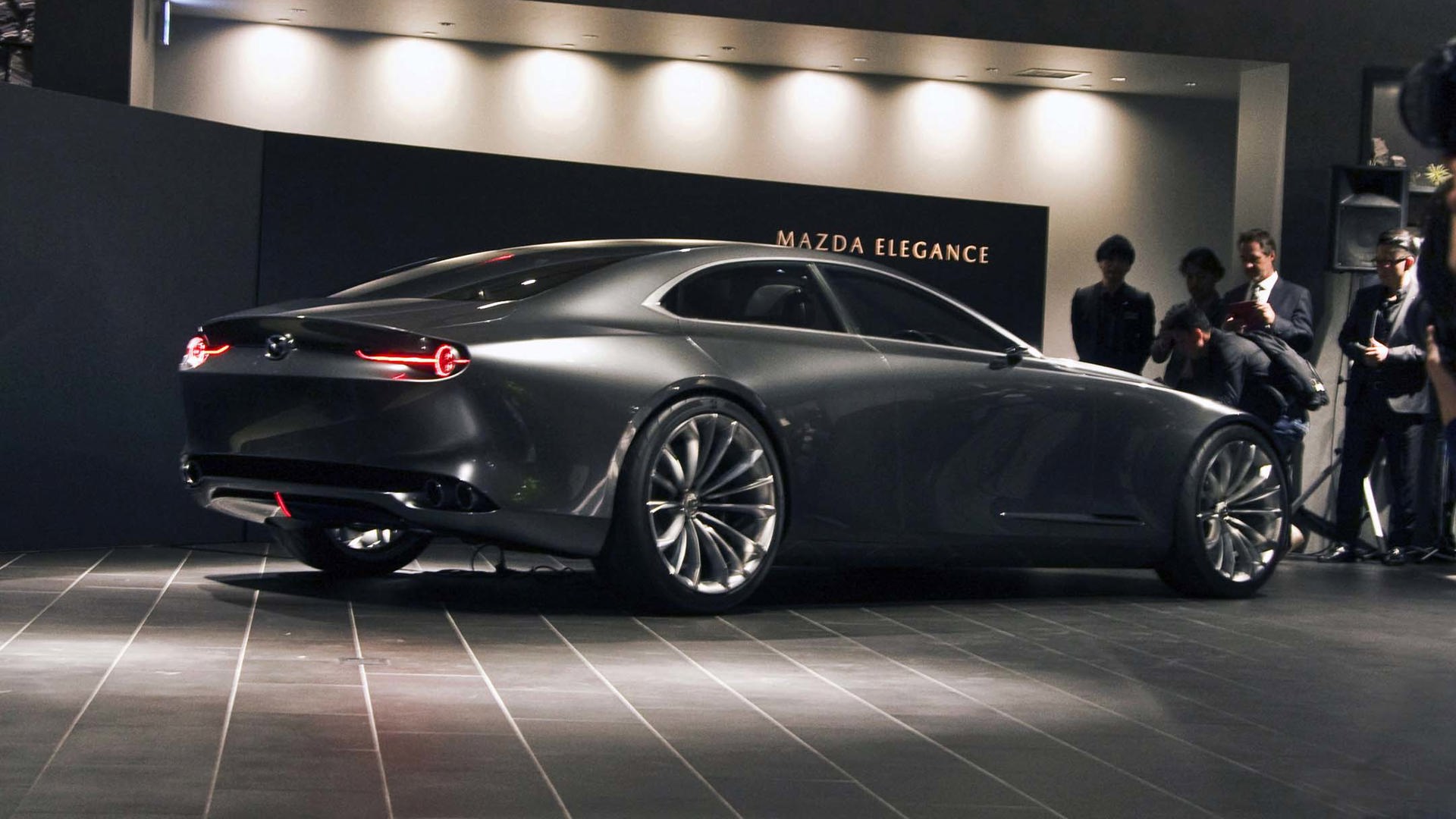
Mazda believes the new compression-ignition engine could prove cleaner than a pure electric over the engine’s lifecycle. While some of us bemoan the increasing complexity of today’s power systems, compared to the hands-on simplicity of old, Fujiwara pointed out that sophisticated technology is needed to keep such advanced power plants running at peak efficiency. Errors can be recorded and sent back to technicians, and eventually back to the company itself. The old engine architecture is incapable of meeting such standards.
As far as the burgeoning wave of AI (artificial intelligence) and autonomous driving goes, Fujiwara claimed, “I love to drive. I want to drive the MX-5 roadster when I’m 100 years [old].” But he pointed out that it’s possible he’d need a little assistance. “If Mazda cars have [a] co-pilot, autonomous technology, if I am suddenly sick the car can take over.”
But he emphasized that Mazda has no intention of ever producing driving appliances. Regardless of which market a vehicle is intended for, its dynamics won’t be adapted to suit different global tastes as some companies have done – and its character won’t be softened, even to sell more cars.
Given the reaction to the recently unveiled concept cars, they might not have to worry about that.
As vehicles grow disturbingly more alien, and technology more bewildering in complexity, the serene minimalism of Mazda’s new Kodo design is a bit like an organic balm for the soul.
